







Playing fetch or grooming Fido isn't just good for your precious pooch — it also benefits your brain.
Such interactions appear to strengthen brain waves associated with rest and relaxation, South Korean researchers report in the March 13 issue of the journal PLOS One. Their small study compared people's mood or hormone levels before and after spending quality time with a willing canine.
For the study, Onyoo Yoo, a doctoral student at Konkuk University in Seoul, asked 30 volunteers to take part in a series of activities with his well-trained 4-year-old female poodle. After getting to know her, the
volunteers fed, massaged, groomed, photographed, hugged, walked and played with the pup.
During each activity, EEG tests measured their brain waves for three minutes. Participants also answered questions about their emotional states after each activity.
The study revealed that different activities had varying effects on participants' brain waves.
Playing with and walking the dog increased the strength of alpha waves, a general indication of stability and relaxation, CNN reported. The study noted that alpha wave activity is linked to lower mental stress and better memory.
Meanwhile, grooming, play-
ing and gently massaging the dog strengthened beta waves — evidence of heightened attention and concentration.
Volunteers also reported feeling less stressed, fatigued and depressed after the poodle play.
Many studies in this field have been anecdotal or subjective, according to a Canadian researcher who welcomed the insights offered by these experiments.
"It is super exciting" that Yoo's research provides more insight into how the known benefits of human-animal interactions may be occurring, physician Colleen Dell told CNN. She's a research chairwoman in One Health & Wellness at the Uni-
'Animal-assisted therapy can be very beneficial for people who enjoy being around animals.'
versity of Saskatchewan.
"Studying the area in a multitude of ways — such as the EEG and subjective scales — is really important," she said.
But a University of Michigan neurology professor said the study had some shortcomings — notably a low number of participants and the lack of a control group to see whether the actions would have similar benefits if done with a human instead of a dog.
"This study was not designed to determine what mechanisms might link pet interactions to the observed changes in brain activity," physician Tiffany Braley told CNN.
Researcher Yoo conceded that further study is needed to confirm the findings. He said the results may also have been biased by the participants' own fondness for animals because they were recruited at pet salons and a dog grooming school.
But, he concluded, one thing seems clear: "Animal-assisted therapy can be very beneficial for people who enjoy being around animals."

The United States ranks 10th highest in the world for obesity in men, results show.
More than 1 billion adults and children around the world are now obese, a new global analysis estimates.
Nearly 880 million adults now are living with obesity, as well as 159 million children, according to the report published Feb. 29 in The Lancet journal.

Obesity rates for kids and teenagers quadrupled worldwide between 1990 and 2022, rising from 1.7% to 6.9% for girls and 2.1% to 9.3% for boys.
Meanwhile, adult obesity rates more than doubled during the same period, researchers found. Obesity increased more than twofold in women (8.8% to 18.5%) and nearly tripled in men (4.8% to 14%).
“It is very concerning that the epidemic of obesity that was evident among adults in much of the world in 1990 is now mirrored in schoolaged children and adolescents,” said senior study author Majid Ezzatti, chairman of global environmental health at Imperial College London.
These figures outstrip predictions made by the World Obesity Federation, which had predicted that 1 billion people globally would be living with obesity by 2030 in its World Obesity Atlas 2022.
Essentially, the globe had already surpassed that mark by the time of the atlas’ publication, according to the new study.
Obesity is now the most common form of malnutrition in most countries, researchers said.
That’s because the proportion of adults who are underweight declined by more than half between 1990 and 2022, and by one-fifth in girls and more than one-third in boys.
More than 1,500 researchers contributed to the study, which looked at body mass index for more than 220
million people representing more than 190 countries.
In the United States, the obesity rate increased from 11.6% to 19.4% between 1990 and 2022 for girls and from 11.5% to 21.7% for boys.
About 44% of American women and 42% of American men are now obese, up from 21% and 17% two decades earlier, researchers report.
In fact, U.S. men experienced the world’s third-greatest increase in obesity rates during those two decades, just behind Romania and Qatar, results show.
The United States rates 10th highest in the world for obesity in men, results show. The nation also ranks 36th in obesity among women, 22nd in obesity among girls and 26th in obesity among boys.
The island nations of Tonga and American Samoa have the highest obesity rates in the world for women, while it is American Samoa and Nauru for men. In Polynesia and Micronesia, more than 60% of the adult population is living with obesity.
There are many forces driving obesity around the world, according to the World Obesity Foundation. These include genetics, biology, access to health care and increased availability of calorie-dense foods that lack essential nutrients.
Researchers worry that major global issues will worsen both obesity and underweight.
“The impact of issues such as climate change, disruptions caused by the COVID-19 pandemic, and the war in Ukraine risk worsening both rates of obesity and underweight, by increasing poverty and the cost of nutrient-rich foods,” researcher Guha Pradeepa, from the Madras Diabetes Research Foundation, said in a journal news release.


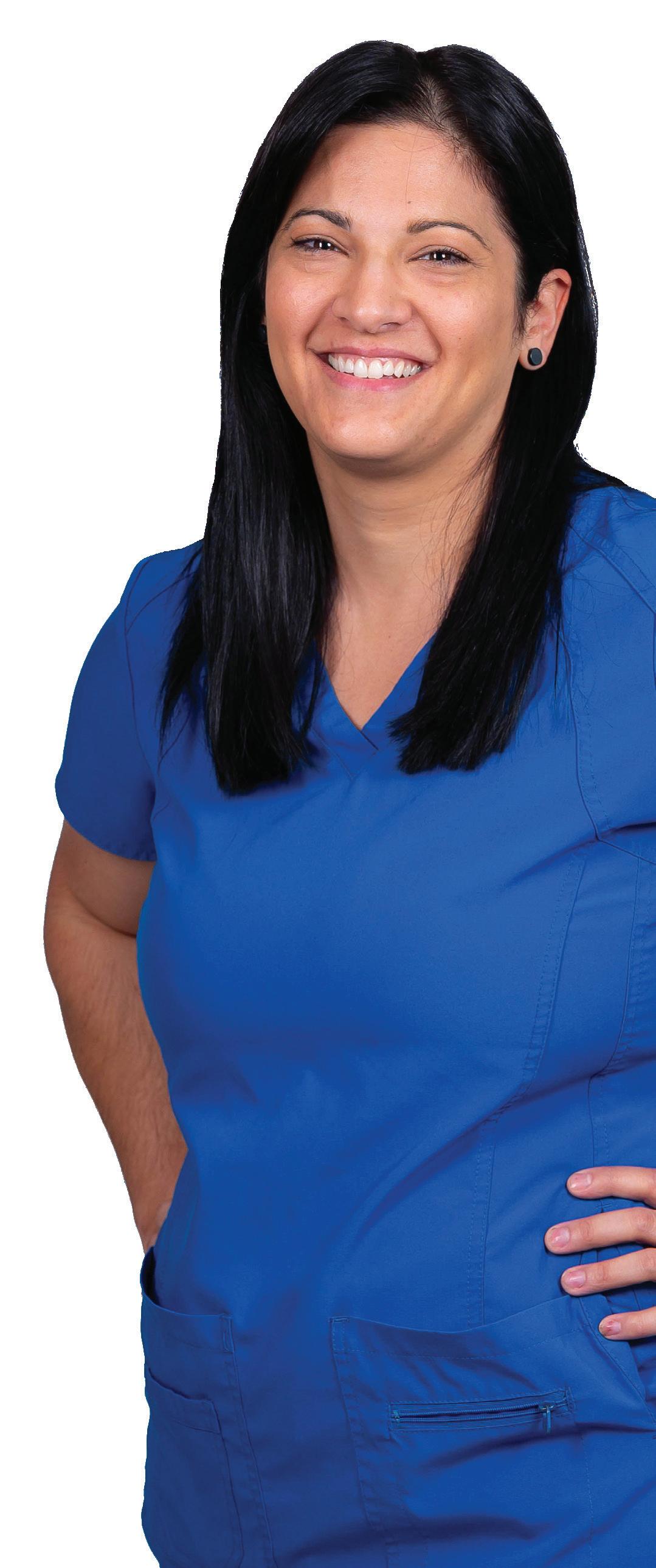




 By George W. Chapman
By George W. Chapman


middleman (pharmacy benefit managers) and sell directly. Established giant PBMs like CVS Caremart, Cigna Express Scripts and United’s OptumRx refuse to work with CPD. As a sign of things to come, California’s largest insurer, the Blues, has dropped their PBM, CVS Caremart and affiliated with Amazon and Prime to significantly lower drug costs.

On Feb. 22, 2024, the giant healthcare billing clearinghouse “Change Healthcare” (owned by United Healthcare Group) was hacked. It is the clearinghouse for 50% of all medical claims in the US or 15 billion claims totaling $1.5 trillion annually. It is the link between providers and payers. The
The final num ber for 2023 is still being calculated, but it’s safe to say now that it will be in the neighborhood of $4.7 trillion.
That is well over $13,000 per capita, which is nearly double the per capita cost in other wealthy developed countries, most of which have national health plans.
American Hospital Association called the hack “the most significant attack on the healthcare system in US history.” Tens of thousands of physicians, dentists, pharmacies, hospitals and other ancillary providers can’t get paid. New York Sen. Chuck Schumer asked CMS to cut through the red tape and advance payments to
MA plans added 1.7 million new members in 2024. The big three commercial carriers, United, Humana and Aetna, accounted for 86% of the new members.

As our nation continues to age and baby boomers hit their 70s, actuaries estimate that by 2030, less than seven years from now, our nation’s healthcare bill will approach an astounding $16 trillion. That’s more than triple the cost of last year.
This will be nothing short of calamitous.
If life expectancy is a good indicator of the true bottom line or getting our money’s worth, you need to look elsewhere. We don’t crack the top 50 of all countries ranked by life expectancy.
There are two outstanding contributors to our exorbitant costs that other countries with national plans or single payers don’t have to contend with. First, our countless insurers result in multiple non-clinical administrative and overhead costs and profits. (Medicare has lowest administrative costs of all insurers.)
Second, we spend (and use) far more on drugs per capita. Other countries with national or single payer systems use their purchasing power to negotiate all drug prices. Not just a measly 10 prices which Congress has reluctantly allowed Medicare to do in a couple more years. If not in this election cycle, healthcare will by the No. 1 issue in 2028.
Of the big three, Aetna grabbed 60% or 476,000 new members. Nonprofit plans didn’t fare as well. The Blues attracted only 9% of new members. The steady wave of baby boomers eligible for Medicare has slowed down somewhat. Between 2015 and 2020, MA membership grew at 22%. Between 2020 and 2025, it is estimated growth will decrease to 16%. New members or younger seniors don’t generate many claims, yet. Consequentially, profits are healthy for the various MA carriers. Claims naturally increase as younger seniors become older seniors. As the steady stream of newbies or younger seniors dwindles, so will insurer profits. CMS is vigilant for carriers that will tend to mark-up or “up code” claims to increase their annual per member payments from Medicare. United is being investigated for their artificial intelligence system which denies more prior authorizations for care than traditional Medicare.
By next year, 2025, we will be at a tipping point with the nursing shortage. Shortage estimates run anywhere from 200,000 to 450,000. If left unresolved, we can expect delays in treatment, a decrease in the human touch, increased waiting times and more stressed-out nurses retiring earlier and earlier. Primarily due to the shortage of nursing instructors,

providers while the clearinghouse is shut down. Too many eggs in one basket? The Department of Justice tried to block the purchase of Change Health by United Healthcare Group in 2022 but failed. As of this writing, the problem hasn’t been corrected and providers can’t get paid.
78,000 qualified applicants to nursing schools were turned down for admission. 10% of nurse instructor openings are unfilled. The average nurse instructor is between 56 and 60 years old. Nurse PhD applicants have decreased 10% in the last decade. The shortage of teachers is impacting capacity. Thankfully, in a rare example of bipartisanship, Congress is passing legislation to bolster the “nursing pipeline.” The Train More Nurses Act (S. 2853/H.6122) requires DHHS and DOL to conduct a study and issue a report on grant programs available to mitigate the nursing and allied professional shortage. Other legislation includes The Allied Health Opportunities Act (S.2304); The Precept Nurses Act (S.1627); The Nurse Faculty Shortage Reduction Act (S.2815/H.7002); and the Occupational Workforce Training for Healthcare Act (H.6078).
The billionaire entrepreneur has been shaking up the drug industry with his Cost Plus Drug company. CPD currently provides more than 2,500 generic drugs to more than two million consumers. The key is pure pricing transparency which is anathema to the drug industry. Price equals actual manufacturing cost plus a moderate markup for distribution and profit. Cuban said we need to “sustain versus extort.” CPD has recently constructed an 11,000 square foot facility in Dallas to produce sterile injectables which are in short supply. They are working with the FDA on other shortages. Cuban wants to bring prices down and bring manufacturing back to the US, away from China. For example, penicillin G benzathine now costs a staggering $600 per vial. CPD is working with the FDA to produce it for $3 per vial. Yep. Cuban wants to bypass the expensive
Firearm injuries are now the No. 1 cause of death in children and young adults, ac cording to the Kaiser Family Foundation. Statistics show there has been a 42% increase in pediatric firearm deaths between 2018 and 2022. 80% of adults report gun violence as a major concern. Northwell Health recently sponsored a meeting in New York City to discuss the alarming trend. Attending were providers, researchers and government agencies. A new multi-million-dollar awareness campaign was launched. So far, $10 million was pledged to the Ad Council by Northwell, Intermountain Health, Johns Hopkins, Children’s Hospital Association and Yale New Haven Health, among others. The goal is to raise $40 million in two years. DHHS has updated and improved their reporting mechanism for tracking pediatric gun deaths. 75% of all emergency rooms participate.
The Affordable Care Act mandated that all insurers must provide certain preventive services, like immunizations and mammograms, without co-pays from patients. In a sense, they are free. This impacts everyone with insurance. A little-known lawsuit brought by the nonprofit Christian-sponsored Braidwood Management challenged the free preventive care mandate. Braidwood argued it should not be forced to provide preventive HIV drugs because it violated their rights under the Religious Freedom Act. And the government’s advisory committees that developed the preventive services mandate were not properly appointed by the president, which violates the Appointments clause. Basically, they argued congress cannot delegate such responsibilities to government agencies under some cases. A lower court has agreed with Braidwood. It is being appealed. Legal experts believe it will eventually go to the Supreme Court, which will probably ignore the religious freedom argument and focus on the delegation of authority argument. Recently, SCOTUS has been wary of congress delegating regulating authority to agencies, like the EPA for example.

George W. Chapman is a healthcare business consultant who works exclusively with physicians, hospitals and healthcare organizations. He operates GW Chapman Consulting based in Syracuse. Email him at gwc@gwchapmanconsulting.com.
ELEMENTAL MANAGEMENT GROUP
ELEMENTAL MANAGEMENT GROUP
Hybrid Nurse Aide Training Program
Hybrid Nurse Aide Training Program
ELEMENTAL MANAGEMENT GROUP
Hybrid Nurse Aide Training Program
Hybrid Nurse Aide Training Program
ELEMENTAL MANAGEMENT GROUP
ELEMENTAL MANAGEMENT ROUP
ELEMENTAL MANAGEMENT GROUP






ELEMENTAL MANAGEMENT GROUP



Equip your facility with our unstoppable HYBRID CNA program, empower your team to deliver top-notch care with the strength of a champion.
Equip your facility with our unstoppable HYBRID CNA program, empower your team to deliver top-notch care with the strength of a champion.
Equip your facility with our unstoppable HYBRID CNA program, empower your team to deliver top-notch care with the strength of a champion.
Are you looking for an innovative way to attract CNA students? We have your answer
Are you looking for an innovative way to attract CNA students? We have your answer
Equip your facility with our unstoppable HYBRID CNA program, empower your team to deliver top-notch care with the strength of a champion.
Are you looking for an innovative way to attract CNA students? We have your answer
Are you looking to minimize and most importantly eliminate agency use? We have your solution
Are you looking to minimize and most importantly eliminate agency use? We have your solution
Are you looking for an innovative way to attract CNA students? We have your answer
Are you looking to minimize and most importantly eliminate agency use? We have your solution
Are you looking to improve morale by increasing your direct care PPD?
Are you looking to improve morale by increasing your direct care PPD?
Reach out to us to hear more
Reach out to us to hear more
Are you looking to improve morale by increasing your direct care PPD?
Are you looking to minimize and most importantly eliminate agency use? We have your solution
Reach out to us to hear more
Are you looking to improve morale by increasing your direct care PPD?
Are you looking to captivate and motivate the newer generation by offering unique and rewarding training opportunities?
Are you looking to captivate and motivate the newer generation by offering unique and rewarding training opportunities?
Reach out to us to hear more
Are you looking to captivate and motivate the newer generation by offering unique and rewarding training opportunities?
Look no further contact us today
Look no further contact us today
Look no further contact us today
Are you looking to captivate and motivate the newer generation by offering unique and rewarding training opportunities?
CONTACT:
CONTACT:
Look no further contact us today

Peg Reith BSN, RN
Peg Reith BSN, RN
Phone: 315-529-3267
CONTACT:
Phone: 315-529-3267
Email: CNA_Training@elementalmgt.com
Email: CNA_Training@elementalmgt.com
Peg Reith BSN, RN
Phone: 315-529-3267
CONTACT:
Peg Reith BSN, RN
Email: CNA_Training@elementalmgt.com
Phone: 315-529-3267
Email: CNA_Training@elementalmgt.com








It wasn’t easy. As a woman who lived through the challenges of divorce, I understand first hand how difficult it can be to ask for help.
The thought of reaching out for assistance was daunting. I didn’t want to be a burden or inconvenience my family and friends.
I wanted to show the world that I was perfectly fine, thank you. I avoided asking anybody for anything, determined to muscle through on my own, which only led to isolation and needless hardship.
But as I navigated my new-found independence, I began to realize the importance of asking for help and the positive impact it could have on my life and relationships.
It all started with spring cleaning.
I simply had to make sense of the boxes and bags of family photos, documents, and items I “inherited” after losing my mother and father. I had procrastinated for far too long.
It was time.
So I called my dear friend Carol and asked if she would help me begin the emotion-laden process of deciding what to keep, donate or throw away.
A self-described decluttering guru, Carol happily agreed to get me started. Among many helpful tips,

she encouraged me to ask myself, “Does it have value? Does it bring me joy?”
I’m delighted to report that — together — we made great progress. Her help was invaluable!
And we had a good time together, often laughing at the silly things I’ve held onto all these years. My grade school report cards come to mind. No need to be reminded that I “whispered too much.”
as incapable or inadequate? Are you concerned about being a bother? Or, would asking for help force you to acknowledge that, indeed, you need it?
• Redefine what it means to be strong. Everyone needs outside support from time to time, and seeking help on your terms is not a weakness. In fact, the strongest people are often those who have the courage to admit they need reinforcements.
I’ve always admired this quality in others. Real strength is knowing your personal limitations and having the confidence to recruit assistance when necessary.

Spring cleaning is a perfect example of a task that can be overwhelming to tackle alone. Could you use an extra pair of hands?
Here are some tips on how to ask for help:
• Be honest. Take a moment to reflect on what keeps you from asking for assistance. Could it be pride? Do you think you’ll be seen

• Have some faith. Believe that people truly want to help. Just think about how you’d respond if a friend, family member or co-worker asked for a helping hand. You likely wouldn’t hesitate; you might even feel slighted if not asked, especially if someone you cared about was having real difficulty.
Know that others, too, want to be there for their friends and family in need.
• Take a chance. When you choose to open yourself up and expose your authentic self, you are taking a risk. That’s a good thing! When you are “real” like this, you have an amazing opportunity to cultivate deeper, more meaningful bonds with others.
• Make the request. First put some thought into where you could
really use some support; then ask for help with one specific task. It could be something as simple as asking a neighbor for help raking out a garden bed or cleaning the garage to something as important as identifying a trusted roofing contractor.
If finding the right words to make a request is difficult, you might start out by saying, “You know, I’m not very comfortable asking for favors, but I wonder if you might be able to help me with something?”
• Express your gratitude. You know this, of course. A heartfelt thank you in person or in writing will be warmly received by the person whose help you have accepted. No need to go overboard. Remember, people want to help others and don’t expect to be compensated for doing a good deed.
• Offer help in return. Because giving can be as gratifying as receiving, make it known that you are available to return the favor. Better yet, find opportunities to offer help. We all have gifts and can be of great assistance to one another.
So, take it from me life can be better, just for the asking.

Gwenn Voelckers is the author of “Alone and Content: Inspiring, empowering essays to help divorced and widowed women feel whole and complete on their own.” She welcomes your thoughts on this column as well as topic suggestion for future essays at gvoelckers@rochester. rr.com.
























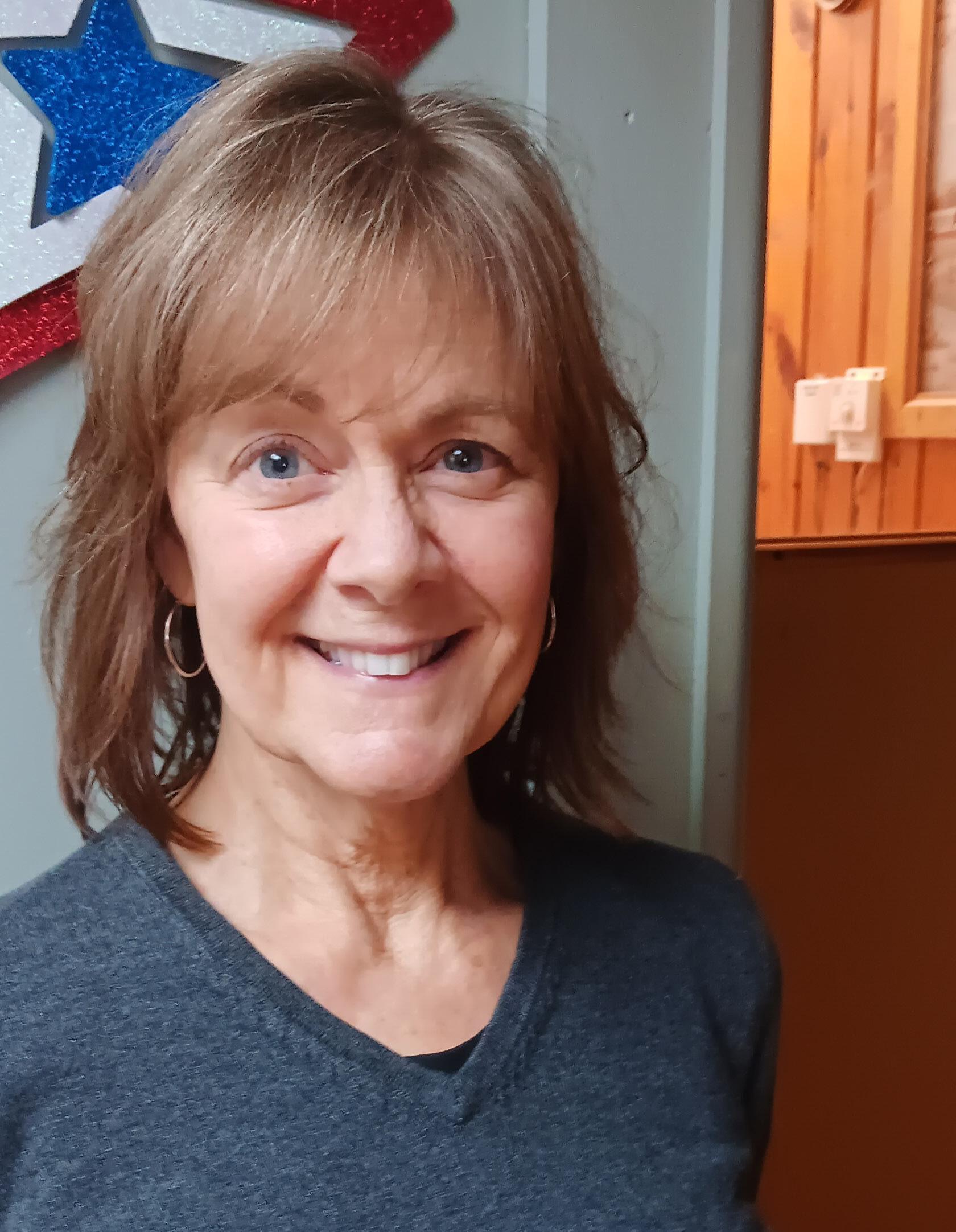
Beyond food and shelter: Rescue Mission of Rome offers health and wellness programs to its participants. ‘We talk about things like social contentedness, fellowship and having a purpose in life,’ says director
David L. PodosQ: How long have you held the position of director of health and wellness at Rescue Mission of Rome?
A: I have held this position for the past eight years.
Q: What professional work were you involved in prior to coming to the organization?
A: So, prior coming to the Rescue Mission, I was doing well-
ness consulting work in the New Harford area with an organization called Community Wellness Partners, which is part of the Presbyterian Homes services and the Lutheran Care Community.
Q: What are the services that you provide here?
A: Well, first let me explain the
health and wellness component of our organization which is not just about biometrics such as our blood pressure and heart rate for example. Important as that is, health and wellness is much more than that. It is actually about the quality of our life. So, our organization is very focused on this idea of wellness and health, but, across all dimensions, our physical, emotional, mental and spiritual components. But we take it even a step further. We talk about things like social contentedness, fellowship and having a purpose in life.
Q: Does your services extend beyond the population of Rome?
A: Yes, we go quite far. Besides the city of Rome, we serve Oneida, Vernon, Verona, Sylvan Beach area, and we go as far as Taberg and Remsen. We also have what we call our mobile mission, where we can take our services out to the people in the community that need it the most, for example shut ins and people without access to transportation etc.
Q: So, what are the specific services you provide?
A: Sure, first and foremost our services are to make sure that people have the basic necessities of life. So, that would be, food, clothing and shelter. For example, at our Rome location we have food programs where we serve three meals a day, five days a week, served right here at the Rescue Mission. On Saturday and Sunday, we serve breakfast and lunch. This service is free and is open to anybody who is hungry.
Q: What if a person can afford their own meal, but because they may be living alone for example and are dealing with loneliness they come here and not only get a meal, but can be with other people. That must help them feel better?
A: You are absolutely right and we have seen people who are lonely dealing with depression who come here and share a meal and it really does help them. Loneliness and isolation are not just something that affects just your mental health, but it also can affect your physical health. So, we are a place that people can call home, where they can share a meal and engage in fellowship.
Q: What are some of the other services that you offer?
A: We have a referral liaison service component. So, if someone comes to us, we have a conversation
with them, we ask them how can we help you what are your needs, etc. If it is something that we cannot provide, we have a very strong connection to many local social services agencies where we have a great relationship with, so we can certainly contact those agencies and refer our clients to them for additional services. Some of those services are help with job placement and or resume building, help with domestic violence, addiction issues, whether it be alcohol and or substance abuse. Our philosophy has always been a hand up not a hand out.
Additionally, we provide what is called representative payee program. With this program we manage and assist our clients in paying their bills and to develop effective budgetary skills.
Q: In the wake of increasing homelessness, does the Rescue Mission offer any shelter services?
A: Absolutely. Our shelter services offer a 14-bed facility for woman and children and a six-bed facility for men. We own the homes and they are located right here in Rome. So, when someone comes in and identifies themselves as homeless for whatever reason, they will meet with our director of operations and they will go through an intake process to determine if our services are a good fit. For example, the person may have fallen on hard times and cannot pay their mortgage and lose their home and or they can no longer pay their rent.
Q: If someone wanted to contact the Rescue Mission and learn more about your services and programs, how would they do it?
A: We have a great website where anyone can obtain a lot of information. That site is www. romemission.org our phone number is, 315-337-2516.
Q: Finally, how is your organization funded?
A: We are funded for the most part by local donors. The citizens of our great community through their generosity keep us open. I also want to mention we have an incredible dedicated staff as well as a group of incredible volunteers who really do so much for us.
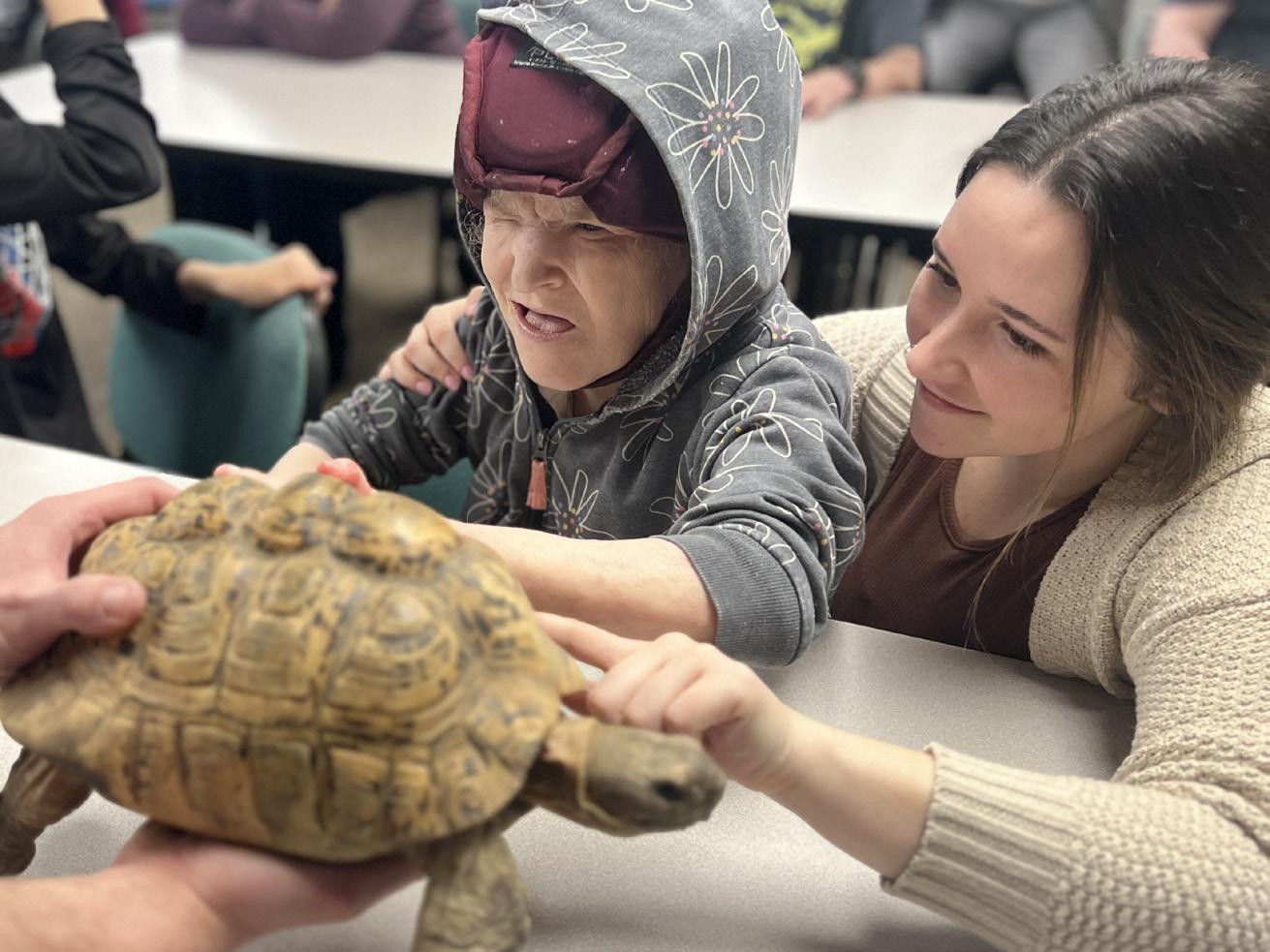
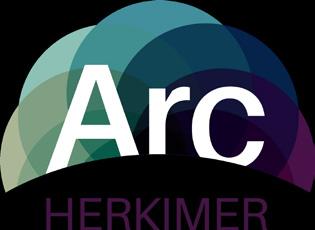
“
I’m the scary transgender person the media warned you about!”
proclaimed a sign held by a cute little 10-year-old girl with pink hair.
She wasn’t scary at all.
Of course, that was the point. It went viral and the little girl, Rebekah, began using her voice to make the world better for kids like her.
“From the time I was born, I knew I was a girl, but the world didn’t. When I went out into the world as Rebekah, there was this burst of joy. I could be myself!”
Rebekah Bruesehoff, now 16 years old, of Vernon Township, New Jersey, told ABC news.
Bruesehoff is transgender. When she was born, everyone thought she was a boy, but she knew herself to be a girl.
After an intense period of anxiety and depression, with the support of her family and medical professionals, Bruesehoff transitioned at the age of 8. She changed her name and went out into the world as herself. She no longer had to pretend to be someone she wasn’t.
In 2022, Gallup Polls asked people across the country whether they identify as straight, lesbian, gay, bisexual or transgender. The CDC also surveyed adolescents, asking similar questions.
The results were stunning and unprecedented. Fewer teens than ever identify as heterosexual, according to the CDC. One in four high school students identifies as LGBTQ.
LGBTQ+ is an evolving term, standing for lesbian, gay, bisexual, transgender and queer, or questioning. It refers to people who aren’t heterosexual. It’s also for people who don’t identify with the sex they were assigned at birth.
The “+” includes those who do not identify as either male or female and those who are attracted to many genders or to individuals regardless of gender and includes those with little sexual attraction to others.
Both studies found that for the youngest generations sampled — millennials (born between 1981-1996) and generation Z (born between 1997-2003) — the numbers of those identifying as LGBTQ had doubled since a 2012 survey.
Since Gallup began measuring LGBT identification in 2012, the percentage of baby boomers and genera-

tion X adults has remained relatively stable, generally around 7%. (generation X is the generation after baby boomers.)
Why the increase in young people?
Many in the LGBTQ+ community believe that increased general acceptance may be the reason why their numbers are so high.
For LGBTQ teenagers, high school is a more accepting place. They can change their pronouns, go to school dances with those of the same gender, and are more likely to openly identify their differences.
Parents today are considerably more accepting of their LGBTQ child than in the past.
For many youth, breaking the news to parents is the scariest part of coming out. Acceptance by parents is key to growing up happy.
The explosion of social media is a big driver of the increase. Though it contributes to bullying and other mental health issues, for many LGBTQ teens, it’s been a boon.
The biggest driver of the increased number of teens identifying as LGBTQ may be the way the question was asked. It was asked in a way that included students who are questioning their sexual identity, who aren’t sure about it. Identity turmoil is definitely a part of adolescence.
Even as they are increasingly accepted by peers, the mental health of those affirming they’re LGBTQ is significantly worse than that of heterosexuals.
“The moment we’re in is so scary in terms of the mental health crisis,” a professor at the University of Texas who studies LGBTQ youth told the New York Times recently. Many are depressed and consider or attempt suicide. A high percentage suffer verbal harassment or physical violence.
LGBTQ persons of all ages suffer.
“I was so angry at the world and sick of my own life. I spiraled down into a deep depression. I planned my suicide” is how Branwen Drew
of Rome described her past before transitioning to a woman at 70. Drew called the Trans Lifeline and talked to a counselor. “She gave me hope and saved my life. A month later, I came out to the world as Branwen Drew.”
Drew and other advocates are alarmed about the political climate in the U.S. with the slate of anti-LGBTQ proposed legislation. It’s a scary time, they say.
The Q Center at ACR Health provides a safe space for LGBTQ youth ages 5-29, with locations in Utica, Syracuse and Watertown.
Karen Fuller, family peer advocate at the Q Center said: “I work with parents and caregivers of LGBTQ youth of any age. I meet with parents one-on-one to answer questions or address concerns when their child first comes out.
“My work with parents, caregivers, is to help support, educate and connect them to services they might need. The goal is to help them gain a better understanding of this part of their child so they can become their child’s best advocate.”
“For parents, the primary concern they have when their child comes out is the future. They worry

will my child be safe, will they be happy, who will love my child, will they be accepted, will they have a successful life?” she added. “Especially in today’s political climate, safety is a huge concern for many of these families.”
The young people that come to our center have a place where they can come and just be themselves and build community with others who are similar. Having these supports in place can help offset the losses they might experience when they come out.
Drew is enthusiastic about what the Unitarian Universalist Church of Utica offers as a welcoming congregation, affirming and including people who are LGBTQ at every level of congregational life. “We make everyone feel welcome and comfortable. I talk to new people, answer their questions, provide resources,” Drew said.
The Trevor Project is the leading suicide prevention and crisis intervention organization for LGBTQ+ young people. Their 24-hour hotline is 866-488-7386 or text 678-678.
“The biggest thing that people can do is to be allies,” Drew said. “We don’t just want your tolerance. We want your acceptance. It doesn’t matter why we are the way we are. We don’t even know that.”
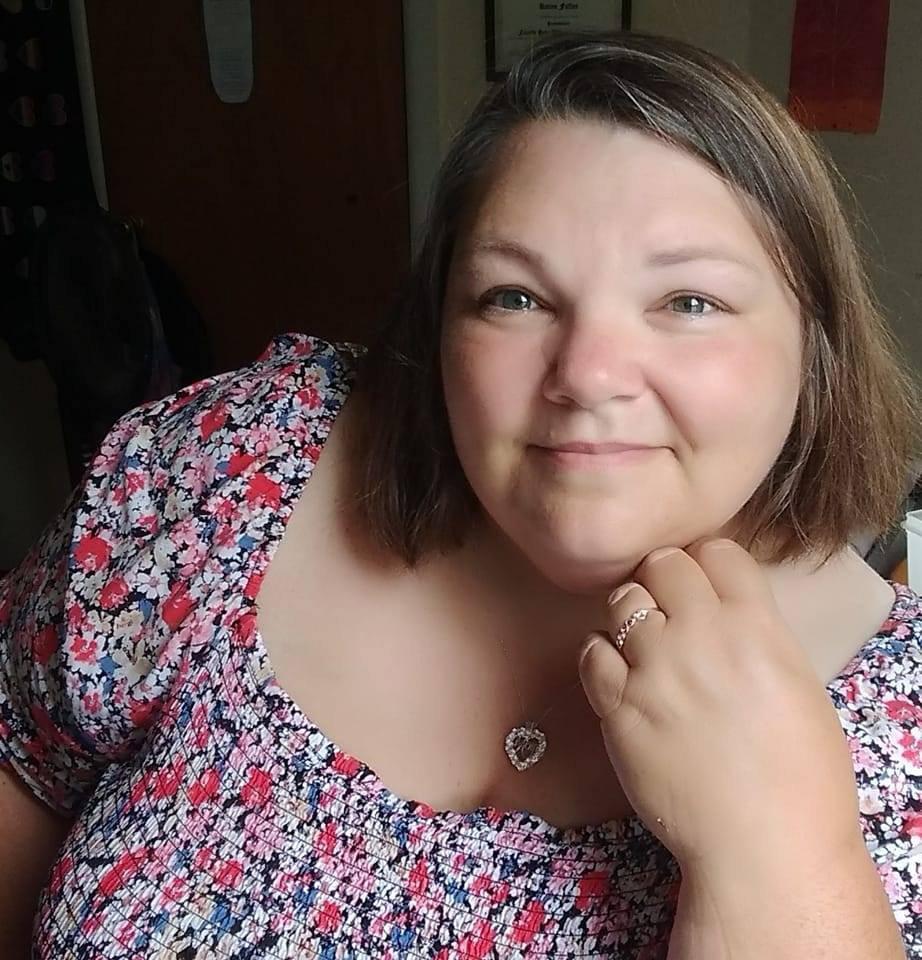
The No. 1 concern of parents today is that their child might struggle with anxiety or depression, says Pew surveyBy Barbara Pierce
It’s difficult to be a parent these days. Most parents say it’s a lot harder than they expected, much harder than when they were kids.
Being responsible for a child and his many, many needs can be exhausting. Everyday stresses, getting them off to school each day, running them around, helping them handle their challenges, makes parenting difficult.
A recent Pew Research Center survey learned this from parents of children under the age of 18.
The survey also asked parents to identify their primary concern about their child. The results were surprising. It’s not drugs. Not teen pregnancy. Not even bullying.
The No. 1 concern of parents today is that their child might struggle with anxiety or depression. This trumps all other concerns. Their children’s mental health is what they worry about, what keeps them awake at night, according to the Pew survey.
Gone are the days of parents sitting up worrying about their kids being bullied, not having friends, getting into trouble with drugs or alcohol. Social media and the pandemic have brought a new dimension to the already challenging job of parenting.
“There’s an increasing mental health crisis among youth in America, further exacerbated by the COVID-19 pandemic,” said Shawn Cusworth, director of behavioral health at The Neighborhood Center, Utica. The Neighborhood Center provides services to promote the well-being of children and families,
as well as providing professional mental health clinical services for children, youth, adults and their families.
“The prevalence of mental health concerns among young people is rising dramatically here in Oneida and Herkimer counties,” she added. She referenced to student surveys conducted in 2022 to help capture the prevalence of mental health issues of children aged 13-18 from Herkimer and Oneida counties.
This survey found that about 77% of kids in Herkimer and Oneida counties had sad, empty, angry or anxious feelings; 86% had anxiety in the past month; 78% had anxiety that interfered with their daily activities.
The survey was conducted in 2022, a the end of the pandemic period, which had a huge emotional toll on children. However, they’re still struggling, say experts.
“The most important thing to pay attention to are any significant changes in the child’s typical functioning that can’t be explained,” said Cusworth. “It can be tough, particularly with teenagers who typically have a lot of changes in their sleep and mood.”
“Paying attention to significant negative changes in mood, sleep, appetite, and activities that last more than a couple weeks is important,” she added. “For example, if a child who is normally very social is sud-
Senior year at Victor Senior High School has been exciting so far.
I’m Carter I., a 18-year-old who’s enjoying every moment of it. My mom always says I’ve got big dreams of becoming an entrepreneur. I guess she’s right. I can totally see myself owning a gym someday. Staying fit and healthy is a huge part of who I am.
Life hasn’t exactly been a smooth ride for me and my family, though. Things took a scary turn when I was diagnosed with epilepsy back in third grade.
I remember my mom noticing my eyes fluttering behind my glasses. We thought it was a vision problem until the eye doctor referred us to my pediatrician, who then sent

denly withdrawn for that amount of time. It’s very important that children have a supportive, non judgmental adult that they trust to check in with them and that knows when and how to get them help. Kids may not always feel comfortable talking to a parent out of fear of upsetting them or other reasons.”
She offered this list of some warning signs that could indicate your child needs help: Sadness that lasts two or more weeks; changes in being social or staying away from others; hurting himself or talking about it; talking about death or suicide; having outbursts or being very moody or testy; out-of-control behavior that can be harmful; big changes in mood, behavior or personality; changes in eating habits, trouble sleeping; frequent headaches or stomachaches; doing poorly in school.
If you have concerns, talk to your child’s doctor for evaluation and referrals to get help, suggests Cusworth. Also, school counselors are a good resource. Many schools have resources for assisting kids and families with a variety of needs, including mental health. See the website for details: https://connect-
Camp EAGR isn’t just any camp; it’s specifically designed for kids aged 8 to 17 with epilepsy and their siblings. It’s part of EPI (Empowering People’s Independence).
edcommunityschools.org/.
The Neighborhood Center provides counseling services at several schools, said Cusworth.
“Also, the Herkimer and Oneida County System of Care websites are a great resource for families. Our agency is part of a community collaboration for those systems. See: https:// oneidacountysoc.com/, https:// hcsoc.org/.”
If an evaluation confirms there is a mental health problem, individual or family therapy is usually recommended, said Cusworth. “The Neighborhood Center has professional therapy and psychiatry services, as well as the Mobile Crisis Assessment Team if there is an urgent need for an evaluation. They are a 988-call center, so dialing 988 will connect anyone to help.”
For non emergencies or to learn more about The Neighborhood Center, call 315-272-2600 or see www. neighborhoodctr.org.
The NY State Office of Mental Health has just released a bulletin stating that they have become keenly aware of the behavioral health issues confronting our children and plan to aggressively strengthen the delivery of care to children. This will include “unprecedented” funding to community organizations, building early intervention programs, increasing insurance coverage, and expanding school-based counseling.
me straight to a neurologist.
That’s when it hit us like a ton of bricks — I had absence seizures, a form of epilepsy.
The journey since then has been a rollercoaster. Medications, countless doctor visits, and even enduring 24 seizures in 24 hours at one point—it’s been tough. But I’m grateful that for the past two and a half years, I’ve been seizure-free.
Back when I was first diagnosed, I didn’t want to talk about it. Seizures were this scary, taboo thing. But I’ve come to realize they’re just a small part of who I am. Camp EAGR played a huge role in boosting my confidence and changing my perspective. It was a turning point for me.
One of the best things about it was that I didn’t have to miss out on any activities. With trained staff and a neurologist on site 24/7, we could do things we’d normally have to sit out of due to our epilepsy diagnosis. It felt liberating to swim, go horseback riding, and even try zip-lining—just like any other kid. Having the neurologist there around the clock gave my parents peace of mind. They knew I was safe and well taken care of.
At camp, I discovered I’m not alone. There are others like me, facing their own battles. It’s where I made new friends. And I am proud to say that I even became a counselor-in-training last summer.
I owe a lot to Camp EAGR and the support they’ve given me. And now, I’m eager to pay it forward by helping other families dealing with epilepsy. Who knows, maybe some-
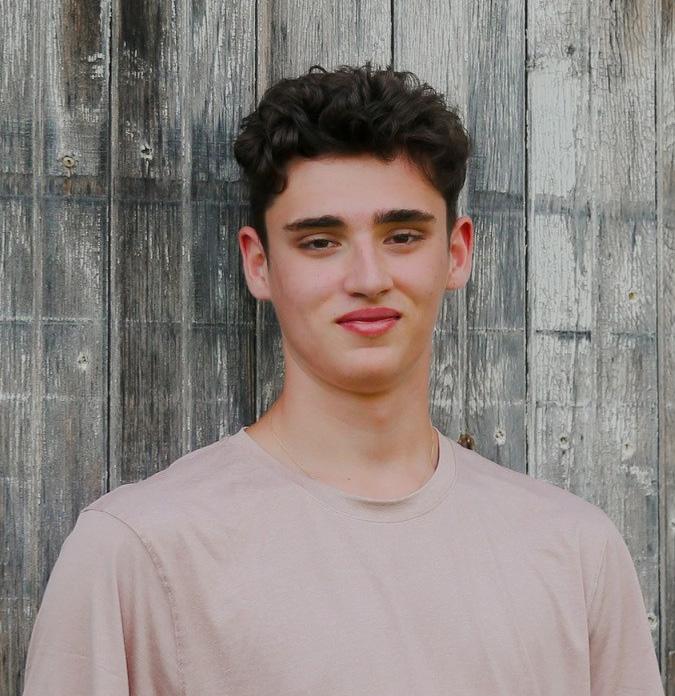
day I’ll run my own camp, helping kids just like me find their confidence and strength.
Submitted by EPI. For more information visit www.epiny.org.
If it seems like you hear about autism spectrum disorder more than you used to, you’re not imagining things.
The Centers for Disease Control and Prevention reports that the prevalence has increased from 1 in 44 US children to 1 in 36.
Andy Shih, chief science officer at Autism Speaks in New York City, said the perceived increase in prevalence reflects progress in awareness, as well as earlier identification and diagnosis.
“More people have become aware of the signs of autism and the tools that can assist in identifying it, the more compelled they are to seek an official diagnosis,” Shih said. “While the prevalence increase is an indication of progress in certain aspects, it also reiterates the need for increased funding for autism research and services throughout the lifespan and spectrum and a need for earlier screenings as the average age of diagnosis in the U.S. is still 4 to 5 years old when we know that autism can be reliably diagnosed by 18 months to 2 years.”
Screening at the pediatrician’s office can help identify more children who would benefit from intervention.
Autism Speaks offers tools to address these needs, including the M-CHAT checklist. This screening list poses a series of questions for
toddlers to help identify signs of autism and assess whether they may need further evaluation. Shih also said that the World Health Organization’s virtual Caregivers Skill Training Program, developed in collaboration with Autism Speaks, provides a self-guided platform to teach caregivers therapies and services skills that can foster the development of their child.
“Intentional, targeted outreach, as well as training culturally informed service providers can also make a difference in delivering accessible quality care to the growing number of children with autism, especially in underserved communities,” Shih said.
The Autism Speaks Autism Care Network forms a partnership among 20 participating medical centers across the U.S. and Canada and uses patient insights to improve person and family-centered autism care.
Local providers agree that increased awareness and screening has led to the rise in diagnosis.
“To a large extent, the increase in the diagnostic rate is related to two factors,” said Henry Roane, Ph.D., executive director of the Golisano Center for Special Needs and chief of development, behavior, and genetics in the department of pediatrics at Upstate Medical University. “One, health care providers are getting better at recognizing signs of ASD
If you have a child on the autism spectrum, it’s only natural to wonder why. Or wonder if something you do could help mitigate your child’s behavioral issues that are caused by autism.
Many parents scrutinize their children’s diet.
If the right foods can promote good health and prevent disease, could it also affect autism?
“ASD [autism spectrum disorder] is an increasingly common disorder with considerable variability,” said physician Prateek D. Wali, division director at Karjoo Family Center for Pediatric and Gastroenterology, Hepatology and Nutrition and director of the Pediatric IBD Program at Upstate Golisano Children’s Hospital. “Gastrointestinal issues are commonly encountered and may be secondary to selective diet while also playing a role in exhibited behavioral symptoms.
“Therefore, nutritional interventions are often used in ASD both with
which leads to better screening and early identification. The second factor is that society as a whole has become more aware of ASD, particularly in the media. This has likely led to more people pursuing diagnostic assessments.”
Roane is also the Gregory S. Liptak professor of child development at Upstate, in addition to being the executive director of Golisano Center for Special Needs, chief of the Division of Development, Behavior and Genetics and Department of Pediatrics at SUNY Upstate Medical University.
Recent research and improved diagnostic tools have helped Theresa McIntyre, speech-language pathologist for the Golisano Center for Special Needs, broach the subject of ASD with parents.
“We tend to feel more comfortable bringing up the subject of ASD to parents sooner than we have done in previous years,” she said.
This can help families access earlier the resources that can help their children.
More healthcare providers are identifying and seeking to address bias when treating people of color. This may also be a factor in the growth of ASD diagnoses.
“Research had typically shown higher ASD prevalence for white children, yet more recent studies have shown these rates becoming more equivalent across race,” said Sean Smith, PhD, a clinical provider a clinical provider in the forthcoming BioBehavioral Health Unit at Upstate Medical University. “This could suggest that the overall increase may also be related to better diagnostics or access to diagnostics for specific populations who were previously under-diagnosed.”
found a causal relationship between gut health and autism,” said Andy Shih, chief science officer at Autism Speaks in New York City. “However, ensuring a healthy and balanced diet is a key part of health and wellbeing in all children, including those with autism.”

From the Centers for Disease Control and Prevention:
• About 1 in 36 children has been identified with autism spectrum disorder according to estimates from CDC’s Autism and Developmental Disabilities Monitoring Network.
• ASD is reported to occur in all racial, ethnic and socioeconomic groups.
• ASD is nearly four times more common among boys than among girls.
• About one in six (17%) children aged 3–17 years were diagnosed with a developmental disability, as reported by parents, during a study period of 2009-2017. These included autism, attention-deficit/hyperactivity disorder, blindness and cerebral palsy, among others.
and without clinical supervision to improve gastrointestinal symptoms. Unfortunately, there is no consensus regarding optimal nutritional therapy including empiric trials of gluten-free and casein-free diets, as well as probiotics, and dietary supplements.”
Despite the lack of studies, the pull of anecdotal evidence still draws families to try nutritional interventions to improve their children’s behavioral challenges.
“We suggest families have a personalized discussion with their primary care providers and gastroenterologist including a pediatric dietician if possible to optimize nutrition while minimizing symptoms safely,” Wali said.
Many families with children on the autism spectrum look at diet because they hope to find a natural intervention that can help their children’s challenging behaviors. The anecdotal findings appear convincing. But “research has not
He added that gastrointestinal issues are commonplace among those with autism, including constipation, diarrhea, irregular bowel movements, acid reflux and others, which can be caused by food sensitivities. The resulting stomach pain and discomfort can contribute to behavioral issues.
“We encourage families to consult with their child’s medical professionals to determine any food allergies and intolerances which might be contributing to GI distress,” Shih said. “A care team can help parents identify and implement treatment plans to relieve GI issues and reduce resulting behavioral symptoms.”
Anecdotally, some families choose to restrict gluten and casein (milk protein) intake and find it helps symptoms improve. However, Shih said that “rigorous clinical research to date does not support the effectiveness of gluten and casein free diets as an evidence-based treatment for autism.
“While implementing a healthy diet in autistic children is important, some children may have food
aversions and sensitivities that can make mealtime challenging for parents. Some children have sensory issues related to food, limiting the taste, texture and smells of foods they are willing to eat, which can lead to concerns about weight gain or malnutrition, and may require the implementation of strategies to help children become comfortable with a variety of new foods.”
Autism Speaks in New York City offers resources and guidance to address concerns around nutrition, including these:
• Tips for picky eaters: www.autismspeaks.org/ blog/autism-picky-eating-tips
• Parent’s Guide to Feeding Behavior in Autism: www.autismspeaks.org/ sites/default/files/2018-08/ Exploring%20Feeding%20Behavior.pdf
• Parent’s Guide to Managing Constipation in Children with Autism: www.autismspeaks.org/ sites/default/files/2018-08/ Constipation%20Guide.pdf




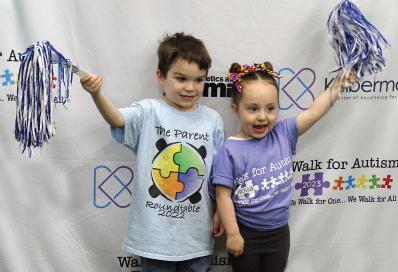

Cate Richardson-Henley, a licensed clinical social worker in Oneonta, talks about her profession, desire to help others, the rewards and chal-lenges of being a social worker
By Barbara PierceQ: How did you become interested in a career as a clinical social worker?
Cate Richardson-Henley: I’ve always been interested in helping people. I always wanted to do therapy.
When I was in college, I started my social work career by volunteering at a hotline for battered women. This was in the 80s and got me interested
in doing this as a career.
Also, I’d been helped greatly by my own therapy. It made me think: “I want to give this kind of help to other people.” By being in therapy for myself, I was attracted to doing clinical work with others.
Twenty-nine years ago, I got my master’s degree in social work and started my therapy career. I began my therapy career as a child and family therapist, working in the children’s mental health clinic at St. Mary’s in Amsterdam for more than six years.
Following that, after working in some case management-type jobs, I worked in a psychotherapy practice in the capitol region for a decade.
Four years ago, I started my own private practice. To keep things simple, I take two insurances and private pay. As it was at the start of COVID when I began, I set up as a virtual office, seeing people online. Now most of my practice is through either virtual or phone conversations with people throughout New York state.
I thought I’d stay virtual. But I’m finding that some people have a bias against virtual. So I’m working to find a larger office space near Oneonta so I can see people in person.
Q: What kind of training did you have?
A: I got my BA in women’s studies from Brown University in Providence, Rhode Island. For my master’s degree in social work, I graduated from the two-year program at SUNY Albany. After having over six years of supervised experience, I am a licensed clinical social worker with an “R” number, which some insurance companies require.
Part of this profession is that you have to keep growing and keep current. New York state requires 36 hours of training every three years and I’ve been doing that. I’ve gone through multiple trainings and have expertise in LGBTQ+ issues; I will begin a six-month training on grief counseling soon.
Q: Is there anything you specialize in?
A: I specialize in the areas I know most about. One is LGBTQ+; as a lesbian, I’ve had problems with dis-
crimination and have insight into the struggles people have. I assist people with self-acceptance, coping with life in an often-invalidating world, dealing with families and gender transitions.
The vast majority of my clients are cis, straight and supportive [cis describes a person whose gender identity corresponds to their sex assigned at birth.] However, I would welcome more clients like me.
I treat people with a broad variety of mental health issues. I work with adults and couples to ease their stress, to find a sense of acceptance and inner peace within themselves and in their relationships, to improve their moods, to help them view themselves, their environment and their families in a more positive way and to give them tools for coping, relaxation, and communicating more effectively.
Specifically, I treat anxiety and depression, bipolar disorder and couples. Also, as my spouse is disabled and I had an accident when I fell on the ice, which made me quite disabled for a while and due to which I still suffer some pain, I treat people with chronic pain and illness.
Q: What are the rewards of your career?
A: I talk to people for a living and help them; what could be better! It’s a great thing; I love this job!
Q: What are the challenges?
A: There are mountains of paperwork! I’m not fond of the administrative part of it — billing, insurance, etc.
Also, it’s a challenge to get referrals; I’d like to have more clients. My mentor told me it took him seven years in private practice before he could stop beating the bush. I still need to do that.
Q: Do you take insurance?
A: I take two types of insurance (CDPHP and MVP) and private pay. I offer a sliding scale. You can find my fees on my website.
For more information on Cate Richardson-Henley, visit www.phonecounselingservices.com.
Arc Herkimer currently operates 20 residences throughout the Mohawk Valley, including individualized residential alternatives (IRA) and supportive living homes.
This type of community housing provides room, board and services to people with intellectual and developmental disabilities.

The certified IRA homes have 24-hour staff who aid with needs of daily living. Direct support professionals (DSP) provide basic home health, including medication administration, dressing, cooking, cleaning and transportation. They also engage residents in enriching activities, such as attending community events, arts and crafts, theme parties and socializing with peers. Staff in these positions often succeed with compassion, Audrey Piccione, supports and services director at Arc Herkimer.
empathy, and effective communication.
“In the IRAs, one of the most crucial parts of direct care is ensuring we have the right staff,” says Audrey Piccione, supports and services director at Arc Herkimer. “Making sure we’re bringing in people who are proficient and eager to learn; staff who are seeking direct support as a career.”
Each IRA is also equipped with
a house manager who focuses on finances, orders medicine, ensures health needs are met, and trains direct care staff. Moreover, they build an understanding of every single resident within that home, helping to navigate specific aspects of a person’s life regarding wants, needs, and personality.
“When we screen individuals for residential living, we try to make the best match we can based on their needs and our support staff,” says Piccione. “Occasionally, an individual may not have a peer group inside their home, so we try our best to engage them in weekend activities with peers who share similar likes and interests.”
Alternatively, supportive living homes do not have 24-hour staff. Rather, DSPs have intermittent
check-ins throughout the week, working closely with people with disabilities on being independent both in their homes and within the community. In supportive living, they aid individuals in skill development, maintaining their home, medication administration, nutrition and cooking, and healthy living.
The Arc Herkimer direct care team is consistently refining how to support individuals both in the IRA homes and supportive living. They are helping individuals with disabilities to be more self-sufficient and building skills to thrive, with the end goal of increased independence and quality of life.
Courtney Brown is public relations director at Arc Herkimer.
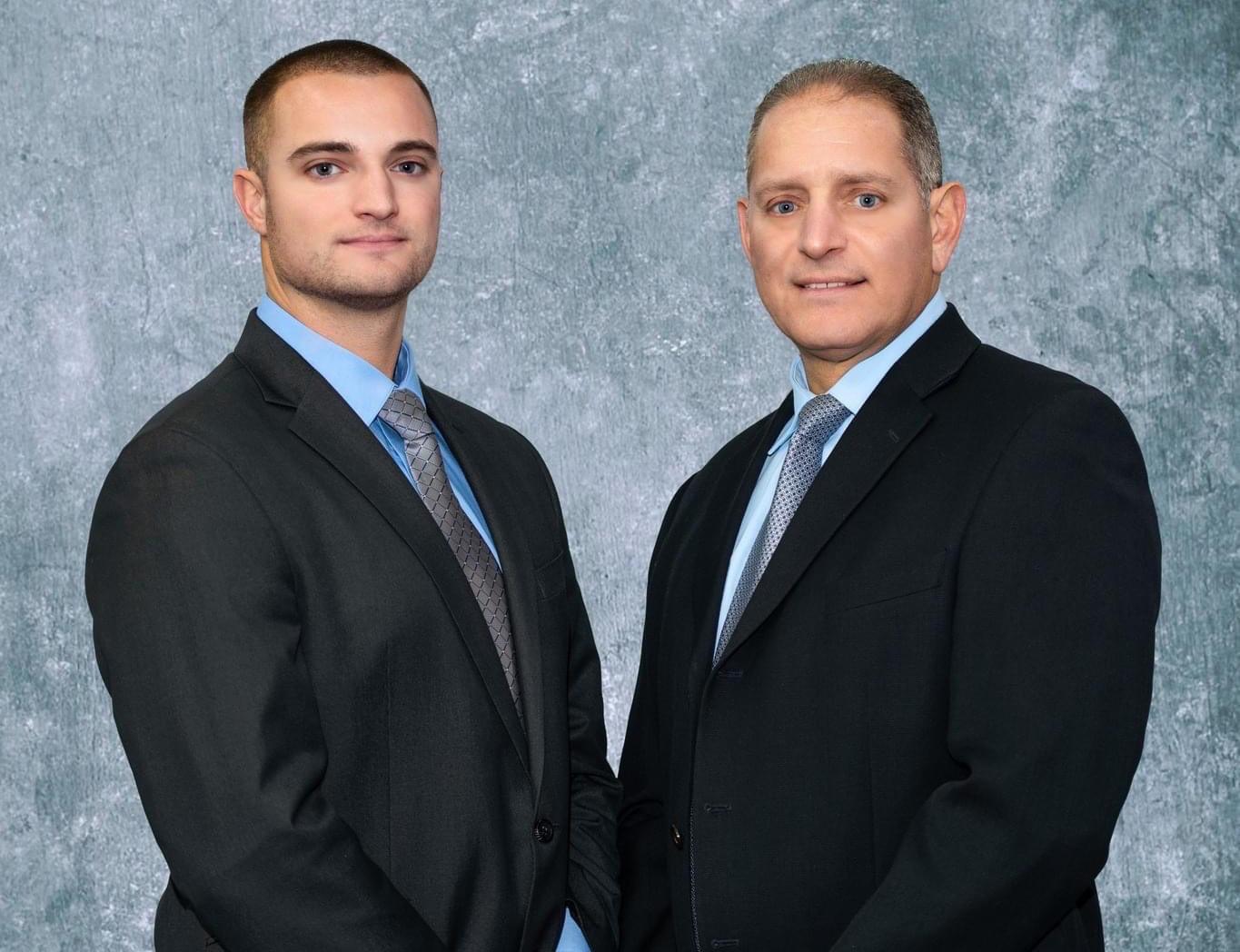
Chiropractic care is a form of alternative medicine concerned with the diagnosis, treatment and prevention of disorders of the neuromusculoskeletal system — the bones, nerves, muscles, tendons and ligaments.
Chiropractors are licensed health care professionals that emphasize the body’s innate ability to heal itself.
We’ve asked chiropractor Nicholas Casper of Casper Chiropractic in Utica, to explain more about chiropractic care.
Q: What is the philosophy behind the care you offer? How does your care differ from traditional medicine?
A: Our philosophy is that the power that made the body can heal the body. Your body is far more capable than anyone has ever allowed you to believe. Our job as chiropractors is to remove the obstacles that interfere with the body’s natural ability to heal. Your body wants you to be healthy. However, due to all the stresses we’re under these days, most of us aren’t functioning at our optimal state.
Medicine is amazing and certainly has its place in our lives. However, there are many issues plaguing people today that can be corrected through lifestyle changes. People usually search for medication or surgery to treat their issue rather than finding the root cause and treating that.
We do that through the spinal adjustment, also known as spinal manipulation.
Conventional medicine focuses on attempting to treat the disease once it occurs. We emphasize more of a preventative mindset. The focus is to proactively improve your health
to reduce the risk of pain and illness in the first place. For those already in pain chiropractic care is very safe and effective method of pain relief.
Our care deals with many of the common reasons why people experience pain and other health issues. With chiropractic care, your body has to go through a particular plan of care in order to repair itself fully. There are three general phases of chiropractic care. First is relief; if you’re in pain, we’ll help you reduce pain and start feeling better as soon as possible. The next phase is restorative care, where your muscles and other tissues heal completely to prevent further pain and bring your body back to 100% function. Once your body has fully healed, we recommend you come in for periodic adjustments to avoid future problems.
Q: Are adjustments it painful?
A: The adjustment is almost always painless. There are safe and effective adjustment options for people of all ages, shapes and sizes.
Q: What are some of the complaints people have when they come to see you?
A: Most people come in with lower back pain, neck pain or with headaches. Some with sciatica; pain that radiates along the sciatic nerve down the buttocks and down each leg. Some have spinal disc pain radiating to the extremities.
Q: How successful are your treatments?
A: I’m more surprised when someone doesn’t get better. The vast majority of our patients have really good results. Of course, we can’t
An experimental blood test accurately detected colon cancer in more than 8 in 10 people confirmed to have the disease, researchers report.
The test — which could be an option for people who want to avoid colonoscopy — is intended for people who have no colon cancer symptoms and are at average risk.
"The results of the study are a promising step toward developing more convenient tools to detect colorectal cancer early, while it is more easily treated," said corresponding author, William Grady, a gastroenterologist at Fred Hutchinson Cancer Center in Seattle.
Current guidelines recommend regular screening starting at age 45. But only 50% to 60% of people who are eligible for colon cancer screening actually take the tests, Grady said.
"Having a blood-based test for people to take during routine doctor's visits could be an opportunity to help more people be screened," he said in a Fred Hutchinson news release.
promise anything, but most people experience improved health in a relatively short amount of time.
Q: What happens when I come to see you for the first time?
A: On your first visit to Casper Chiropractic, we’ll explain the science behind how chiropractic care works. Our office is big on educating people on why we do what we do. We’ll give you a full evaluation which involves history taking, a series of neurological and orthopedic exams and spinal X-rays. This is done to see if chiropractic care is right for you. If there is a good fit, we’ll develop a plan of care that’s specific to your condition and health goals and get you on the path to recovery.
Spinal adjustments are not usually done on the first visit unless the doctors deem it necessary.
Q: What training did you have?
A: I had four years of pre-med in biology and earned my bachelor’s degree at Siena College in Albany. Then I went to Palmer College of Chiropractic in Iowa. That education is nearly four years; I studied anatomy, neurophysiology, biochemistry, etc. and received my Doctor of Chiropractic degree in 2022 (graduating magna cum laude).
Q: What else would you like us to know?
A: Our practice here in Utica began with my dad, Dr. Ed Casper, in 1989. He has been serving the community for more than 35 years. We now work together since I graduated. I’m passionate about what we do and I am dedicated to my craft. My hope is to help as many people as possible.
More than 7,800 people between the ages of 45 and 84 participated in a multisite clinical trial of the new blood test. The research was funded by Guardant Health, developer of the Shield blood test.
The test detects colon cancer signals in the blood from DNA shed by tumors. Called circulating tumor DNA, or ctDNA, it is also used to monitor for recurring cancer and in other emerging screening tests.
In all, 83% of study participants with confirmed colon cancer tested positive for ctDNA. Seventeen percent had a negative test, meaning the blood test did not show colon cancer even though a colonoscopy did.
Researchers said the test was most sensitive for colon cancers, including those in the early stages, and less sensitive in detecting lesions that could become cancerous.
The findings were reported March 14 in the New England Journal of Medicine.
Grady likened the blood test's sensitivity to that of stoolbased tests. But he said it is lower than that of colonoscopy, which he considers the most accurate colon cancer screening tool.
"Getting people to be screened for cancer works best when we offer them screening options and then let them choose what works best for them," he said.

“It brings me much joy,” said Tina Jacobs, owner and operator of Devine Gardens, Morrisville, when asked what she enjoys about gardening.
“The benefits of fresh air and exercise; the smell of the soil; seeing things grow. The flowers are gorgeous and I love to see how nature works so well together.”
“When you’ve had the experience of growing your own food, you appreciate all food more,” she added. “Home grown food tends to be healthier and tastes better. Gardening gives you fresh air, sun shine and moderate exercise. It also gives you a feeling of well-being.”
Jacobs likes getting people excited about the thrills, joys and benefits
of gardening — the multitude of benefits that gardening offers. And she’s excited about introducing folks to the worm castings that she grows at Devine Gardens.
“Yes, I sell worm poop!” she said.
The by-product of worms is full of micro-organisms that are beneficial to the soil. “It helps the soil retain moisture and not be so compact,” she said.
As Jacobs said, there’s increasing evidence that exposure to gardening, to plants and green spaces, has so many benefits for our mental and physical health.
Tending to a garden is great exercise. The movements you make mimic whole-body exercise. You squat, you lunge, you carry heavy bags. Digging, raking and using a push mower are physically intense activities that burn as many calories as a workout in the gym, as well as strengthening your balance, strength and flexibility.
Activities like carrying planters, mulch, or soil, digging holes, stretching to reach weeds, pushing the mower activity engage every muscle in your body. If you aren’t used to these types of activities, you’ll probably feel it the next day. So it’s best to start with small steps and build up to a more active day. And after all that work in your garden, you may sleep better.
If moving around in the garden is a challenge for you, think of what you could to do modify your activities. Use a small stool or raised garden beds if you have back pain. Support your knees when you squat. Buy smaller bags of mulch or soil easier to carry.
Gardening offers relief from stress. The routines of gardening, like watering and weeding, create a calming pattern.
Exercise reduces stress, so does gardening. It’s been shown to lighten mood and lower levels of stress and anxiety. It’s gratifying to plant, tend, harvest and share your own food. After a long day or week at work, doing the mindless tasks of a garden provides the opportunity to slow down, plan things or work out a problem.
It’s not just the act of gardening that has so many benefits; the bacte-
The Edwin J. Wadas Foundation, Inc. announces the completion of a multi-year project with the Utica City School District. The foundation provided a total of $211,415.81 to fund the renovation of student fitness centers located at Thomas R. Proctor High School, John F. Kennedy and Donovan Middle Schools.
The newly renovated fitness centers are available free of charge to any student attending the Utica City School District from grades 7-12.
The new fitness centers are now being used as part of the school physical education curriculum, after school programming and as a sports training facility for male and female students.
“The introduction of physical fit-
ness to this age demographic equips students with the skills needed to maintain physical activity throughout their lives. Physical activity also positively influences academic performance, mental well-being and the overall health of students. We are proud to partner with the Utica City School District to provide these opportunities to their diverse student population” said Victoria Cataldo, executive director.
The mission of The Edwin J. Wadas Foundation, Inc. is to enhance the experiences of recreational and athletic programs for youth ages 5-18 in Oneida and Herkimer counties.
ria in the soil may also help combat stress. A recent discov-ery by the University of Colorado found that a bacterium that lives in soil makes a fatty acid that promotes resilience to stress. The same bacteria have been noted to act like an antidepressant and establish a strong immune system as well.
Gardening is not just a physical workout. It’s also good for your brain, especially as protection against the onset of dementia. Gardening boosts cognitive function; one study found it could lead to a 36% lower risk of dementia.
Being outside is good for our physical and mental health, another benefit of gardening. We tend to breathe deeper when we’re outside. This helps to clear out the lungs, improves digestion, improves immune response and increases oxygen levels in our blood.
Spending time outdoors has been shown to reduce heart rate and muscle tension. Sunlight lowers blood pressure and increases vitamin D levels. As Jacobs said, simply being in nature is good for your wellbeing. It will boost your mood, increase your optimism, and has been linked to fighting depression and other mental illnesses.
Another benefit is that gardening brings people together and strengthens social connections. Social connections are important because they help lower stress, improve resilience and provide support during difficult times in life. This may simply mean interacting with staff at a local gardening center before you dig into your home garden, or interacting with others online.
Tips for starting out: Start small. The larger the garden, the more work it is, the more stressful. It can quickly overwhelm you if you don’t have enough resources or time to care for it. You can always increase the size of your garden in the future. Find plants that grow well in your climate or hardiness zone. Talk with local master gardeners who can be located online.
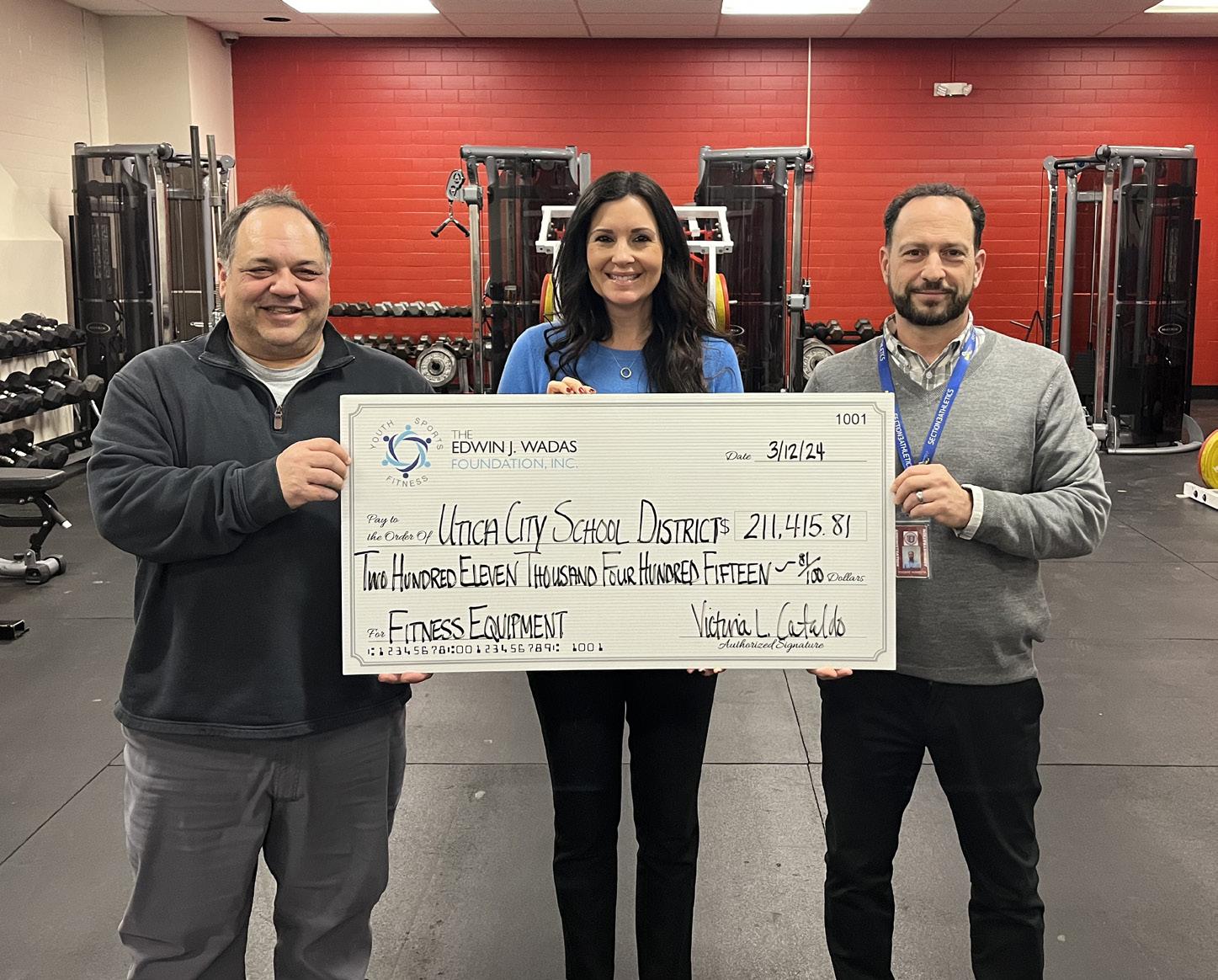
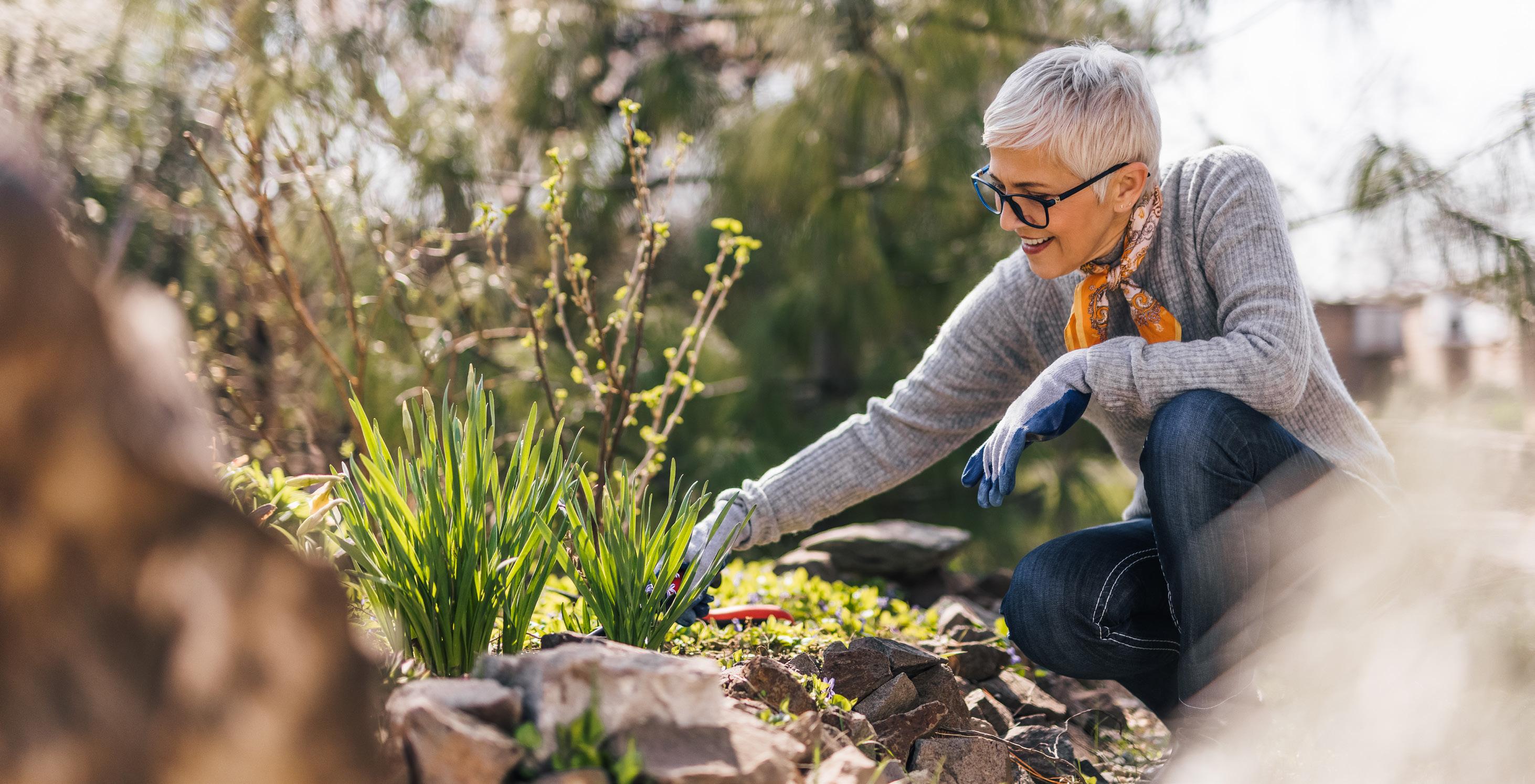
This is the time of year when you complete your gardening plans and prepare for the actual planting. I’m certainly ready. How about you? The warmer weather and staying lighter later into the day encourage you to start producing your gardening dreams for the upcoming season.
As food prices continue to rise, planting a garden of any size will definitely help your nutritional needs and save you financially. There is also the possibility of community gardens if space is an issue. For a small fee, you can get a decent-sized space to grow your vegetables and herbs.
Growing vegetables and herbs is fun, gets you outdoors in fresh air, soaking up the sun (YAY vitamin D!!) and moving your body (exercise needed). The size of the area you have to plant will determine how much you’ll be able to grow.
For those of you living in an apartment, space can be a concern. Windowsills can usually handle some basic herbs such as mint or rosemary. You may need to grow in containers outside your front door as this will still produce a bounty of veggies and herbs. Using containers of all shapes and sizes and colors will house herbs and a variety of veggies from lettuce to tomatoes to squash to potatoes and so much more. Planting in a container decreases the need to weed, keeps animals from noshing on veggies as a snack and allows you to keep a better eye on the soil conditions so you know when watering is needed which can be more frequently in a pot.
Placing large rocks (also can be decorative) on top of the soil will allow for even watering and with
additional watering comes additional fertilizing.
If you find that a plant needs more sun or less sun, they can easily be moved to the other side of the area allowing it to thrive. Containers come in a variety of shapes and sizes and you get to choose the look you are looking for that will not only produce great veggies and herbs but is also pleasing to the eye. Make sure there are sufficient drainage holes to prevent root rot. By placing some dry tree twigs at the bottom quarter of the container before adding the soil will help to absorb and retain the water. Adding pots on the stairs into your space is another great place for growth and décor. Depending on the plant, you can also bring them indoors come colder months. Hanging planters for edible flowers is also appealing to the eye.
What to plant in containers? These are few of my favorites:
Herbs
• Basil (do I hear pesto anyone?)
• Cilantro
• Lemon balm (my favorite tea)
• Parsley
• Rosemary
• Sage
• Thyme
• Arugula
• Spinach
Vegetables
• Lettuce — many varieties to choose
• Peppers (all varieties)
• Potatoes (grown in a potato bag produces greenery but most importantly beautiful potatoes)
• Tomatoes
The type of soil should be light
with a slow-release fertilizer. Consult with the gardening supply store as to the best soil necessary for growing container herbs, flowers and vegetables in your area. Remember to fertilize as recommended for the plant to grow lush and tasty veggies and herbs.
Your plants will need direct sunlight of eight hours daily. Depending on your location, moving the containers may be needed to obtain the necessary lighting. Consider the lighting to help determine the type of plants you will be able to grow.
Watering, both overwatering and underwatering, can be detrimental to the plant. Seedlings need continuously moist soil. Drainage or the use of self-watering vessels are important to the plant’s success. If possible and space permitting, consider a rain barrel to capture rainwater which can save you trips to the faucet.
For those of you with more space — that is wonderful!
Build raised beds or raised rows with wood, logs or stone. These should be no wider than three to four feet (you want to be able to get to the center with ease) and as long as you like or space allows. Depending on your location and the type of soil will depend on what to add to your beds. A trip to the local garden center will provide you with answers and the tools you need.
With more space you can add variety and more plants. Some of my favorite garden plants are:
• Tomatoes
• Eggplant
•Arugula
•Cabbage (yum sauerkraut!)
•Sugar snap peas
•Zucchini
•Pumpkin
•Asparagus
•Potatoes
•Green beans
•Rhubarb (perennial)
•Fruit trees (apple, pear)
•Peppers
•Lettuce — varieties
•Variety of herbs (basil, thyme, sage,
lemon balm)
Do you have a gardening friend?
If so, consider each of you to grow different vegetables and share your harvest. This way more items can be grown and you’ll learn from each other about technique.
Don’t forget to keep a garden journal. This way you can be certain of the type of seeds and plants you used, the soil and fertilizer used, location of plants, the weather (especially last frost and if it was rainy season) and more.
I always enjoy planning and plotting my garden on paper in early spring. This way you make sure what plants to purchase and/or when to start the seedlings indoors. Create a “symbol key” such as T for tomatoes, Z for zucchini, P for peppers, etc. as you plot locations. A sketch of your garden will help in future planning especially with crop rotation. Initially you may want to jot down information daily as the spring garden is fast growing. Once established you may want to jot your notes weekly or bi-weekly. Pest information such as potato bugs or tomato worms. Do not forget harvest information such as yield from certain plants if using a variety. If you have questions, write them here as well. Take your journal when visiting a fellow gardener or trip to the garden shop. And always take pictures. It is so much fun looking at gardens and the harvest of the past.

Deborah Dittner is a family nurse practitioner and health consultant. Her mission is to transform as many individuals as possible through nutrition and lifestyle changes. www. debdittner.com
Lately, I’ve felt down, stressed out and hopeless about the future.
There’s so much going wrong in the U.S. and in the world. I’ve lost the optimism I generally have. That’s not a way I want to feel. It’s definitely not a good feeling.
Optimism means seeing the positive side of things, expecting things to turn out well, feeling like I’m able to make things work right for me. I want to get that mindset back. It’s connected to happy. I want to feel happy.
Happiness doesn’t come easy, as most of us know. Disappointments and annoyances grab our attention like pesky gnats. Even the good things in life lose their luster over time. With a jam-packed schedule and more and more stuff to do every day, happiness seems out of reach.
“Inside the brains of happy people” — this headline in a magazine caught my attention recently. Maybe this will give me some ideas about how to feel happier, I thought. I began reading articles and blogs on what makes people happy.
Research suggests that happiness is something we can cultivate with practice. Here are some of the practic-
es of people who are fairly consistently happy:
Acknowledge the good: The brains of happy people are tuned to notice and enjoy the positives in life that may pass others by. They appreciate life’s little pleasures. They seem to be wearing rose-colored glasses.
Our human brains are wired to focus on threats, on negative things. But research suggests that we can compensate for this bias by consciously trying to focus more on the positive. Happier people are not necessarily naïve or blind to negativity, but accommodate to it, recognizing both good and bad things in life.
This is a particularly interesting finding, said one of the researchers. Their positive outlook on life is not a reflection of naivety or ignorance of the world’s threats and dangers, but an effort to see positives where they can find them.
If things aren’t going right for them, they find the best solution available to solve the problem, tackle it and move on. If it can’t be solved, they move on.
Nothing fuels unhappiness quite like pessimism. The problem with a pessimistic attitude, apart from the damage it does to your mood, is that
it becomes a self-fulfilling prophecy: if you expect bad things, you’re more likely to experience negative events. Pessimistic thoughts are hard to shake off until you recognize how illogical they are. Force yourself to look at the facts and you’ll see that things are not nearly as bad as they seem.
Happy people don’t ignore threats. They’re just better at seeing the good.
Embracing a purpose leads to happiness: “All we really need to make us happy is something to be enthusiastic about!” said an author back in the 1800s. He’s definitely right! “You have to find something that really interests you and pursue it ferociously,” said an actress of the past. People with a sense of purpose live happier lives. Numerous studies show the happiest people are those who are caring for others.
You can’t think your way into your life’s passion and purpose; you have to ‘do’ your way in. Take steps towards what you think you might want. Try out different things. The more you act, the more you’ll get clear on what matters to you.
Connect with others: Connecting to the people around you is one of the surest routes to happiness. Bonding with others keeps us strong and happy. Social media gives us only a momentary buzz. Put down your device and focus on in-person interactions with others.
If you want to connect with others, you have got to get out there and
make it happen. Go to places where you may find people with the same interests as you, reach out to them.
Get your body moving: Even moving for just 10 minutes releases a chemical in your brain that helps you feel happy. Happy people exercise regularly. Do whatever form of moving feels good to you and what you’ll stick with — walk, garden, work out in the gym, dance.
Get enough sleep: Happiness is also linked to getting enough sleep. Those who are happiest get an adequate amount of top-notch sleep, seven to nine hours.
To summarize: I need to notice and be grateful for the small positives, focus on them instead of the negatives. I need to spend more time with real people, put down my devices and move my body every day, as well as getting enough sleep. If I make the choice to do these things, maybe I’ll be happier.
I can do it! How about you?

Barbara Pierce is a retired licensed clinical social worker with many years of experience helping people. If you would like to purchase a copy of her book, “When You Come to the Edge: Aging” or if you have questions for her, contact her at barbarapierce06@yahoo.com.
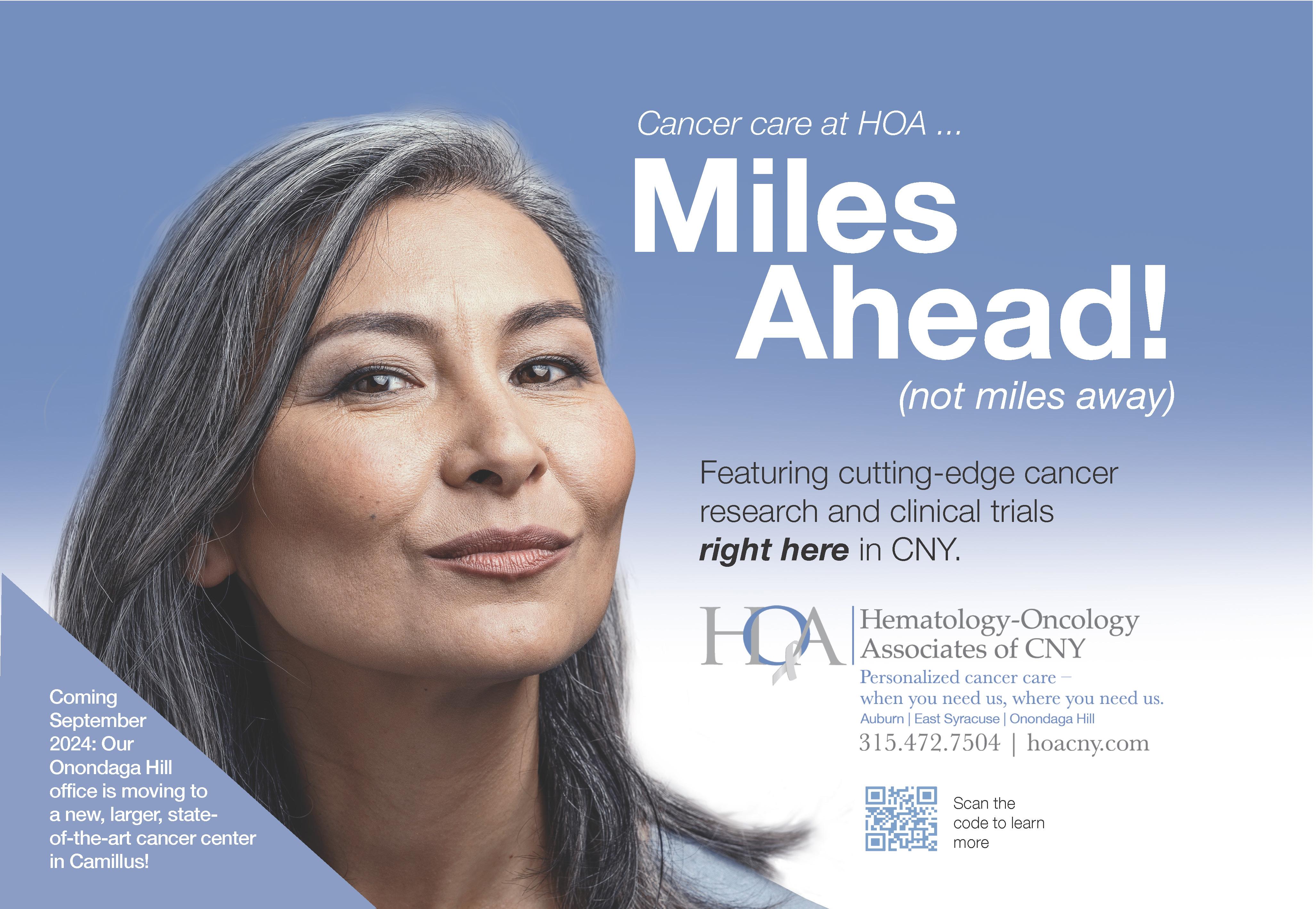
Dear Savvy Senior,
Does Medicare offer any financial assistance programs to help seniors with their medication costs? I recently enrolled in a Medicare drug plan, but I take some expensive medications that have high out-of-pocket costs and need some help.
Living on a Shoestring
Dear Living,
Yes, there’s a low-income subsidy program called ‘Extra Help’ that assists Medicare beneficiaries on a tight budget by paying for their monthly premiums, annual deductibles, and co-payments related to their Medicare (Part D) prescription drug coverage.
And, thanks to the Inflation Reduction Act that was passed by Congress and signed into law in late 2022, this program has expanded and gotten easier to qualify for in 2024. Even if you’ve applied and didn’t qualify before, you may be eligible now.
The Extra Help benefit is estimated to be worth about $5,300 per year. Currently over 13 million people are receiving this subsidy, but there’s around 3 million more who may qualify for it but don’t realize it.
The amount of financial assistance you would receive depends on your income and assets. If you qualify, you’ll pay no premium or deductible (unless receiving a partial subsidy), and no more than $4.50 for each generic drug or $11.20 for each brand-name drug your plan covers in 2024.
To get the subsidy, your resources must be limited to $17,220 or $34,360 for married couples living together. Bank accounts, stocks, bonds, mutual funds and IRAs count as assets, but your home, vehicle, personal belongings, life insurance and burial plots do not.
Also, your annual income must be limited to $22,590 for an individual or $30,660 for married couples. If you support a family member who lives with you, or you live in Alaska or Hawaii, your income can be higher. In addition, the government won’t count any money if you receive help for household expenses like food, rent, mortgage payments, utilities and property taxes.
There are three ways to see if you qualify and apply for Extra Help: online at SSA.gov/medicare/part-dextra-help; by calling Social Security at 800-772-1213; or by visiting your local Social Security office.

The application form is easy to complete, but you will need your Social Security number and information about your bank balances, pensions and investments. Social Security will review your application and send you a letter within a few weeks letting you know whether you qualify.
If you don’t qualify for Extra Help, you may still be able to get help from a state pharmacy assistance program or a patient assistance program. Visit NeedyMeds.org to search for these programs.
If you’re eligible for Extra Help, you may also qualify for help with your other Medicare expenses through your state’s Medicare Savings Program.
State Medicaid programs partner with the federal government, so income and asset qualifications vary depending on where you live. Medicare Savings Programs will pay your entire Medicare Part B premium each month. And in some cases, they may also pay your Medicare deductibles, coinsurance and copayments, depending on your income level. To find out if you qualify, contact your state Medicaid office.
You can also get help through your State Health Insurance Assistance Program (SHIP), which provides free Medicare counseling in person or over the phone. Visit ShipHelp.org or call 877-839-2675 to locate a counselor in your area.
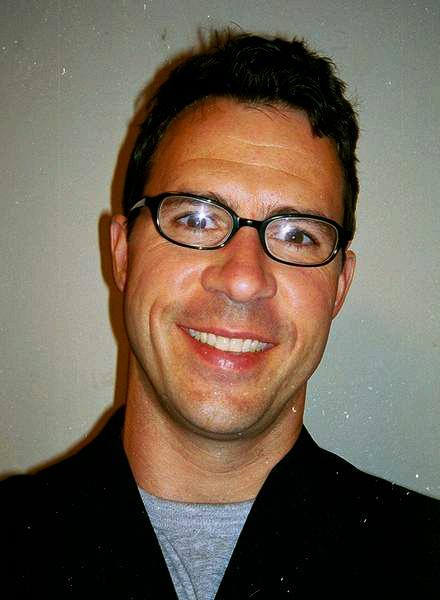
Send your senior questions to: Savvy Senior, P.O. Box 5443, Norman, OK 73070, or visit SavvySenior. org. Jim Miller is a contributor to the NBC Today show and author of “The Savvy Senior” book.



Excellus BlueCross BlueShield recently awarded the Upstate Family Health Center (UFHC) a $5,000 Health and Wellness Award to support its Low Barrier Emergency Food Cupboard.
This program was created to provide patients in need with balanced food bags for individuals presenting to the clinic in need.
“This generous donation will have a major impact in helping us meet our goal of providing our patients with balanced meals,” said Torie Hairston, senior director of integrated health at Upstate Family Health Center. “What sets this program apart is the fact that we have made the food supplies available, while eliminating barriers such as showing identification and providing documentation. This eliminates stigmas and embarrassment which
The Community Memorial
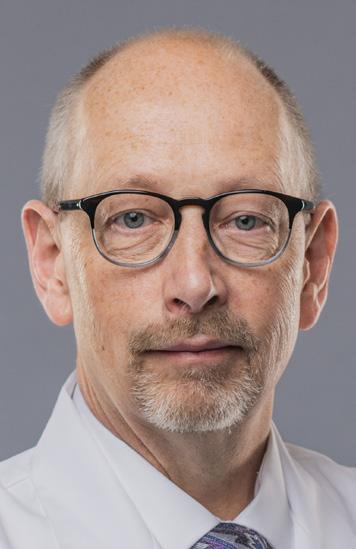
(CMH) network announced its contin-ued growth through the acquisition of a well-established private gynecology practice in Utica.
Physician Scott Beattie and his team from Medical Arts Gynecology and Infertility, P.C. have joined forces with the Community Memorial healthcare network, solidifying their commitment to providing vital women’s health services in the existing office on Old Burrstone Road in Utica and now also in Hamilton.
The longtime dedicated practice will transition to Hamilton Medical Services Center for Women’s Health.
Board-certified by the American Board of Obstetrics and Gynecology, Beattie graduated with a dual Bachelor of Arts in biology and chemistry from SUNY Oswego. He pursued his medical degree at SUNY Upstate Medical University in Syracuse and completed his residency in obstetrics and gynecology at the University of Vermont Medical Center. Beattie specializes in minimally invasive and advanced laparoscopic surgery, offering a wide range of gynecological services for women.
“Dr. Beattie’s decades of experience in comprehensive women’s healthcare make him a valuable addition to the CMH medical staff,” said physician Michael Walsh, chief medical officer. “We eagerly anticipate collaborating on patient care in both Utica and Hamilton, expanding
can often prevent individuals from seeking help.”
UFHC created the cupboard after an evaluation of patient needs indicated a prevalence of food in-security. Food insecurity is associated with lower school performance for children, low physical activity, poor general physical health and illness, and poor mental health.
Food insecurity impacts individuals across the lifespan and can lead to anemia, cognitive problems, behavioral problems, depression, anxiety, and asthma. It is also associated with unhealthy weight control behaviors and disordered eating.
Excellus BlueCross BlueShield’s Health and Wellness Awards support programs that conduct ongoing work or initiatives designed to improve community health and health outcomes. Health disparities
our commitment to providing exceptional care.”
Joining CMH alongside Beattie is
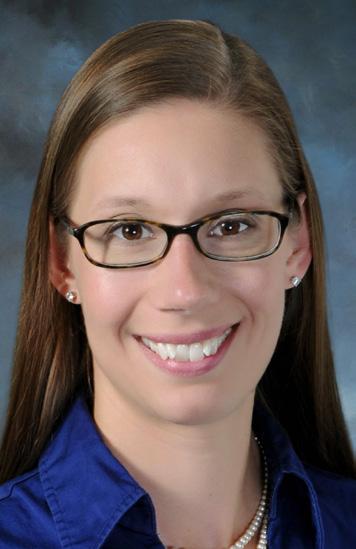
physician assistant Amy Roberson. A New York native, Roberson earned her Bachelor of Science in biology from Elizabethtown College in Pennsylvania and her Master of Science in physician assistant studies from LeMoyne College in Syracuse.
“Recognizing the need for women’s healthcare services locally, we are happy to welcome Dr. Beattie and his staff to our network,” said Jeff Coakley, president and CEO.
“Our joint efforts to in-crease access to women’s health through collaboration with our primary care providers will improve care coordination for patients. We are excited to continue elevating the quality of healthcare with both Dr. Beattie and Amy Roberson.”
Andrew Dober appointed director of labor sales at Excellus
Excellus BlueCross BlueShield has appointed Andrew Dober director of labor sales.
Dober began his career at Excellus BCBS in 1992 and has held a variety of sales positions in are-as including commercial sales and the government programs division. Since 2000, he has been dedicated to serving, retaining and growing the health insurer’s labor book of business across its 31-county service area. With this new appointment,
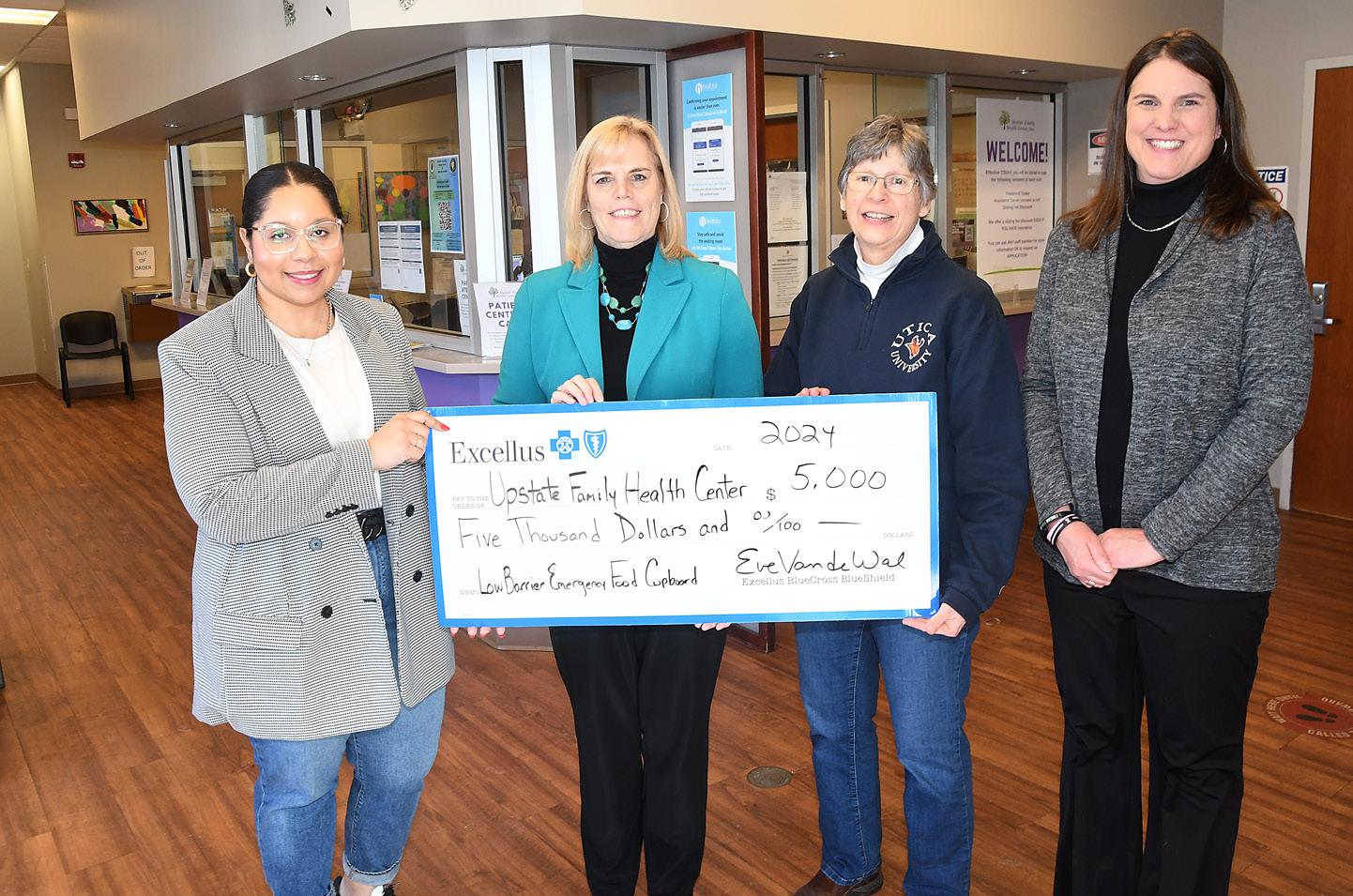
are complex and can have many causes. These awards are given to programs that address specific health conditions or factors linked to health disparities.
“Identifying and combatting health issues including food insecurity is core to our mission as a nonprofit health plan,” said Eve Van de Wal, Excellus BlueCross BlueShield regional president. “We are proud to present Upstate Family Health Center with community health funding to help meet their patients’ needs and provide them with essential meals and nutrition.”
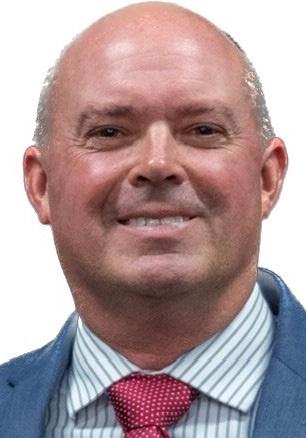
Dober will also serve as the health plan’s corporate designee to the Blue Cross Blue Shield Association’s (BCBSA) National Labor Office (NLO).
Dober, a 2013 graduate of Leadership Greater Syracuse, is NYS-licensed in life, accident and health, and earned an Associate in Science degree with honors in labor studies from Onondaga Community College, a Bachelor of Science degree in business and human resources management from SUNY Brockport, and an Advanced Labor Studies certificate from the BCBSA’s National Labor Office at Rutgers University.
He currently serves on the Labor and Employment Relations Association (LERA) board and vol-unteers with various organizations.
The Edwin J. Wadas Foundation recently joined forces with the American Heart Association to provide free CPR and First Aid in Youth Sports training kits.
The CPR and First Aid in Youth Sports training kits provide the tools necessary for coaches, parents and athletes to learn CPR, use of an AED and other first aid skills.
Training kits are designed to be shared with others and each kit is rated for four to six years and individually trains on average 300 people per year, expanding initial program reach and impact for years to come.
The training kits are intended to
is committed to supporting local organizations that improve community health. The company’s corporate giving follows all applicable laws and regulations and does not support funding organizations that conflict with its corporate mission, goals, policies or products.
Excellus BlueCross BlueShield’s Utica region encompasses Clinton, Delaware, Essex, Franklin, Fulton, Hamilton, Herkimer, Jefferson, Lewis, Madison, Montgomery, Oneida, Otsego and St. Lawrence counties.
support sports-focused community partners such as youth recreational sports teams and school sports teams to implement CPR & First Aid in Youth Sports trainings and AED placement in Herkimer and Oneida Counties. Through a train-the-trainer model, coaches will conduct trainings at their respective sites, strengthening the chain of survival in their respective communities.
Training kits are available on a first-come, first-served basis. To obtain a kit and for more information, contact Mackenzie Shorter at Mackenzie.Shorter@heart.org.
For more information on community grants supporting youth sports contact Victoria Cataldo at vcataldo@ wadasfoundation.org.
Slocum-Dickson Medical Group

Matthew Mittiga announced that physician Matthew Mittiga has joined its pediatric practice.
Mittiga specializes in gastrointestinal issues, developmental disorders and nutritional health, among other issues. He helps families understand their children’s health and is advanced in the Spanish language.
Mittiga obtained his medical degree from the University of New England College of Osteopathic Medicine. He earned a Bachelor of Science in biology from Utica University in Utica and completed his pediatric residency at SUNY Upstate Medical University in Syracuse.
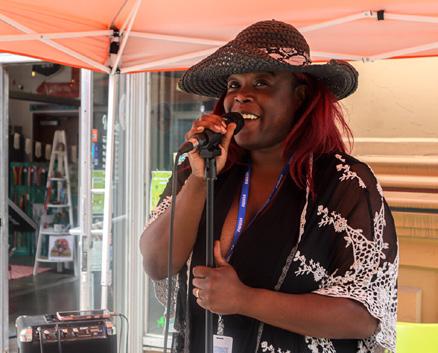







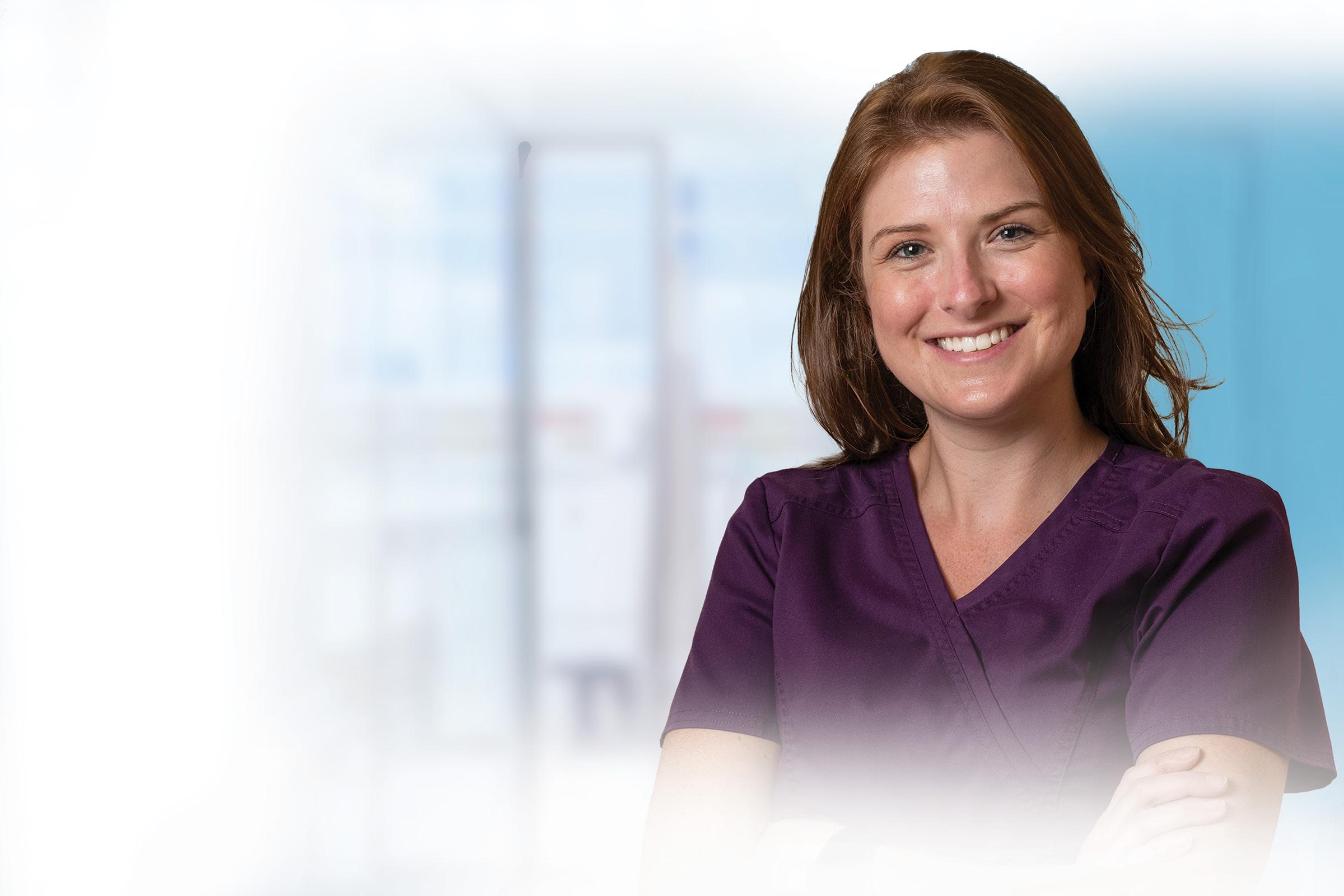

Along with the Blue Cross Blue Shield Association, we’re committed to reducing racial and ethnic maternal health disparities by 50% in 5 years. Join us and take action today: Get
facts in our episode “Reducing Racial Disparities in Maternal Health” with Dr. Cuyler at ExcellusBCBS.com/ podcast or wherever you listen to podcasts
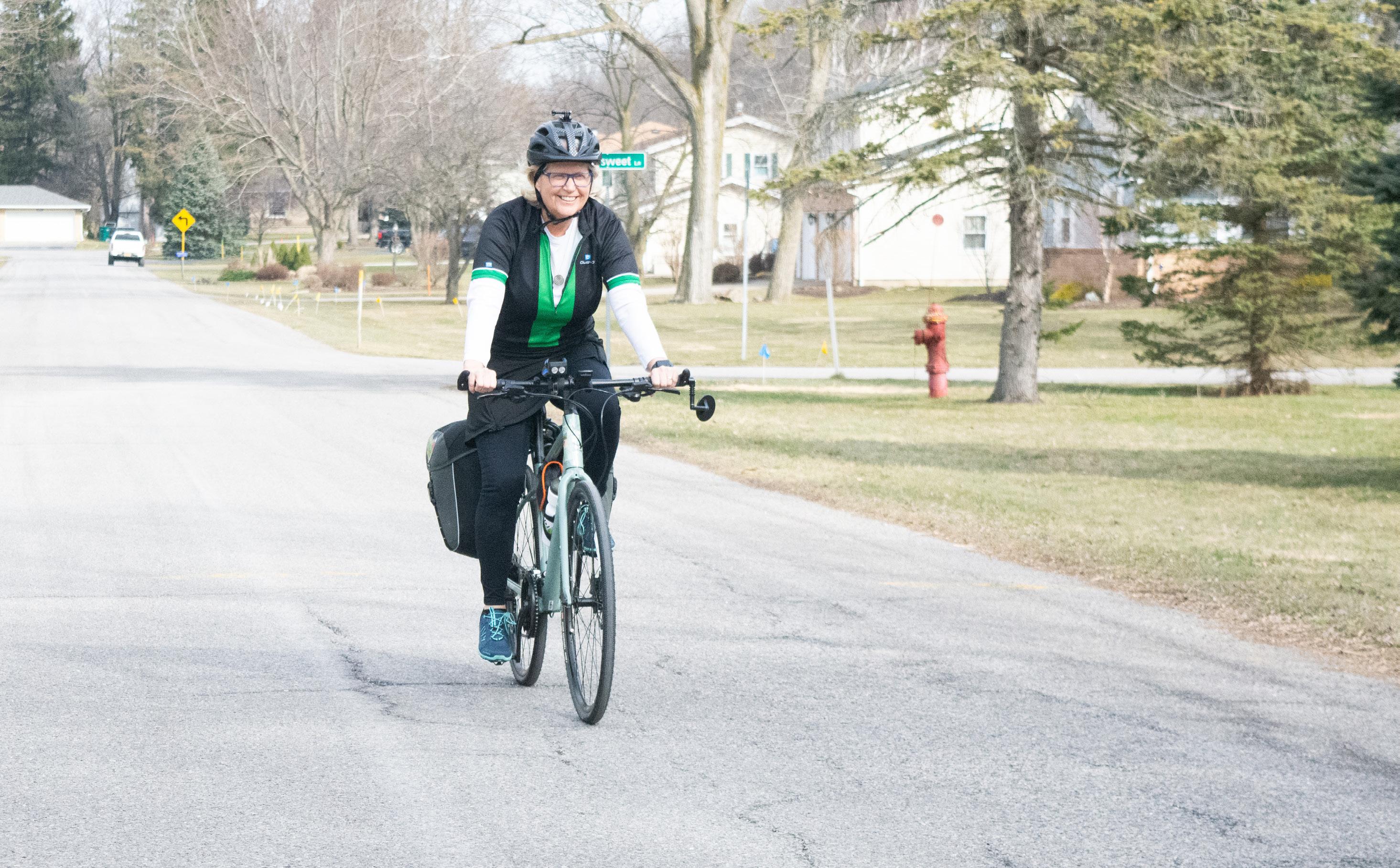
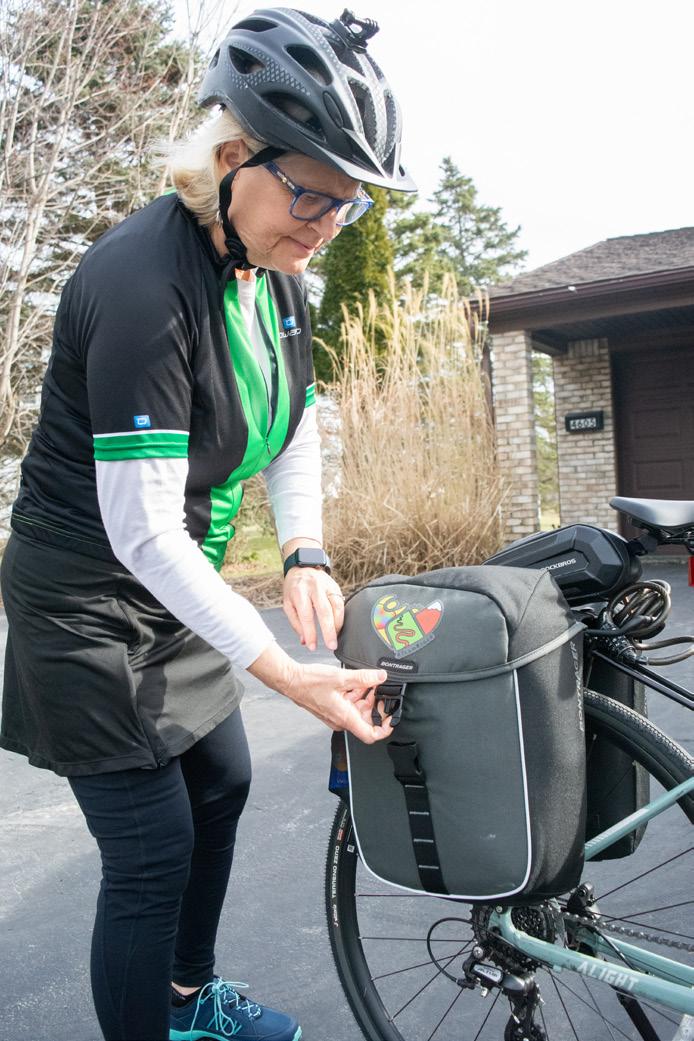
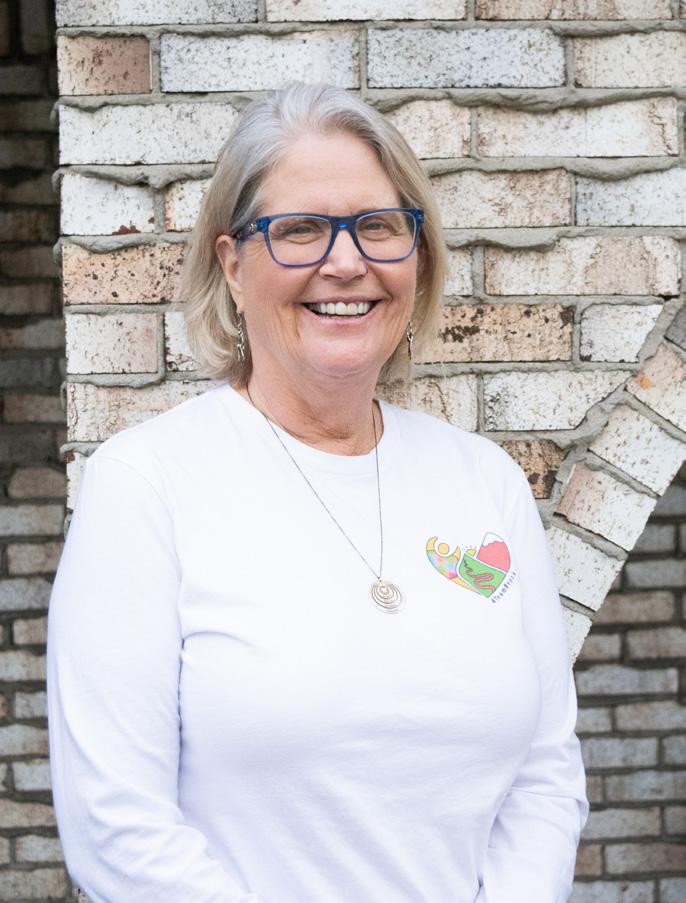
Deborah T. Curtis doesn’t label herself as a cyclist. That’s a title she says she’ll give herself once she gets done riding clear across the country this spring. What she does label herself as is — a mom.
When these two aspects of the Clarence resident — one burgeoning and one a part of herself for several decades — combine, what she has become is a strong advocate for mental health awareness and access to treatment.
Curtis knows first-hand how devastating mental illness can be for individuals, as well as those who love them.
She lost her son, Brock, to his battle with mental illness in 2021. Brock was the youngest of four children and Curtis said that those who knew him would describe him as the all-American kid. “Six-foot-three tall, handsome, blond-haired and blueeyed,” she said. “I think most of his friends’ parents would describe him as charming and funny. He loved to travel.”
While Brock was quiet as a child, sports brought him out of his shell and he played just about every one you could think of, but baseball was his favorite. Both athletics and travel would become defining features in Brock’s 24 years of life, during which time he managed to visit five continents. Among those were two studyabroad programs in Seoul, Korea, in Peru as well as time spent at school in Florida and California before grad-
uating from Niagara University.
According to his mom, it was around the time that he studied in Peru that some signs and symptoms of mental health issues began to appear.
Ultimately, Brock would be diagnosed with bipolar disorder around the age of 21.
Among the important messages that Curtis is trying to bring light to is that the onset of mental illness can happen later than many might think. According to Curtis, the highest incidence for onset of mental health issues is between the ages of 18 and 25.
“One of the things with mental illness is that many times, the person who has it feels ashamed or embarrassed and they wouldn’t if they were diabetic, if they had cancer,” she said.
Ending that stigma is one of the primary reasons that following the loss of her son, Curtis founded The Tallman-Curtis Family Foundation, Inc., a 501(c)(3), known affectionately as 4TeamBrock.
Each syllable of the foundation’s name pays homage to the young man it honors. The “4” is representative of his position as the youngest of four siblings; “team” is a nod to his love of sports and of course, Brock, the young man who Curtis knows can help her inspire meaningful changes.
It is in his memory and honor and with the logo of the foundation attached to her saddlebag, that Curtis
is riding more than 3,400 miles over the course of roughly two months from San Diego, California to New York City beginning in March.
While on the road, Curtis will stay intermittently with family and friends, as well as in hotels and she will also celebrate her 62nd birthday while on the road.
It’s a formidable ride, no doubt, but making meaningful impacts in the ways Curtis and the foundation hope to is no light lift, either.
In addition to recognizing that mental health issues should be destigmatized and that this area of wellness should be treated with the same openness and empathy as any other, Curtis said that access to care also needs to be made easier.
She recalled, “At the time Brock was sick, my one daughter was in med school, my husband and I had decent jobs and had good health insurance and finding the right doctors and getting an appointment, my daughter literally cried to one of her professors to get a recommendation and even then, it took another six weeks.”
For those without the same resources as the Curtis family, she said, finding help can be even more challenging and that is not a position that any person facing any illness should be left in.
Beginning with the ride and extending through the foundation, Curtis hopes to begin to move the needle on these issues, including
helping to implement peer-to-peer counseling for young people experiencing mental health issues and sparking important conversations on the topic.
While she did not fundraise for the bike ride itself and is financing the journey out of her own pocket, those inspired by her endeavor can make donations to the foundation by visiting https://4teambrock.com/
While cycling such huge distances is a new undertaking — before this summer the furthest Curtis had gone on two wheels was 70 miles back in 1989 — physical activity is something that has helped her remain close to the memory of her son and process through her grief.
Following Brock’s passing, she participated in the Tour du Mont Blanc which is a roughly 103-mile trek through portions of Switzerland, Italy and France, and last summer, she walked from Florence to Rome.
She recently retired from her job as a professor at Niagara University, where she taught in the College of Hospitality, Sport, and Tourism Management.
To traverse the width of the US, she decided that wheels would be in order this time around and says that what she lacks in experience, she makes up for in determination.
“Brock was really into the outdoors and sports and he would be the one going with me on this bike ride if he was here,” she said.
And in many ways, he will be.